 Search by Keyword
Sign Up Below for our MONTHLY BEATLES TRIVIA QUIZ!
|
“GETTING BETTER”
(John Lennon – Paul McCartney)
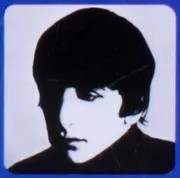 On the morning of June 3rd, 1964, Ringo had become ill during a Beatles photo shoot which ended up having him admitted into the hospital with tonsillitis as well as pharyngitis. This posed a particular problem, not only because The Beatles had a recording session scheduled later that afternoon, but because the group was leaving for an international tour the following day. Producer George Martin rang up session musician Jimmy Nicol and asked if he would want to fill in as a temporary Beatle. The answer was "yes," and he immediately made arrangements to show up that afternoon at EMI Studios to quickly rehearse Beatles material for the tour. On the morning of June 3rd, 1964, Ringo had become ill during a Beatles photo shoot which ended up having him admitted into the hospital with tonsillitis as well as pharyngitis. This posed a particular problem, not only because The Beatles had a recording session scheduled later that afternoon, but because the group was leaving for an international tour the following day. Producer George Martin rang up session musician Jimmy Nicol and asked if he would want to fill in as a temporary Beatle. The answer was "yes," and he immediately made arrangements to show up that afternoon at EMI Studios to quickly rehearse Beatles material for the tour.
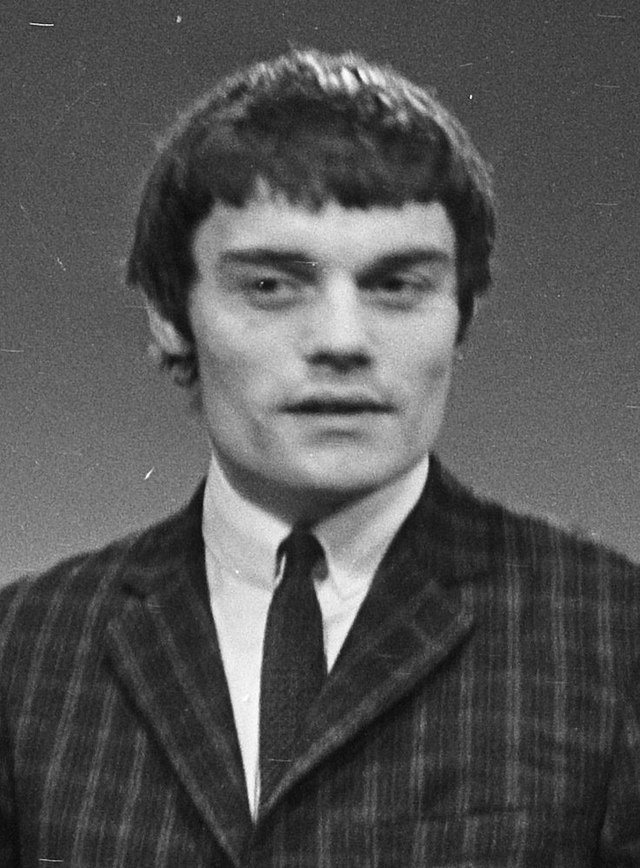 “After every concert, John and Paul would go up to Jimmy Nicol and ask him how he was getting on,” recalled biographer Hunter Davies. “All that Jimmy would ever say was, ‘it’s getting better.’ John used to take the piss out of him (tease him about it) and it became a joke phrase.” “After every concert, John and Paul would go up to Jimmy Nicol and ask him how he was getting on,” recalled biographer Hunter Davies. “All that Jimmy would ever say was, ‘it’s getting better.’ John used to take the piss out of him (tease him about it) and it became a joke phrase.”
Jimmy Nicol indeed did get "better" during his ten-day stint as The Beatles’ drummer, Ringo flying out to Melbourne, Australia to resume drumming duties on June 15th. Manager Brian Epstein presented him with a check and also a gold watch in honor of his "retirement" that was inscribed “From The Beatles and Brian Epstein to Jimmy - with appreciation and gratitude.”
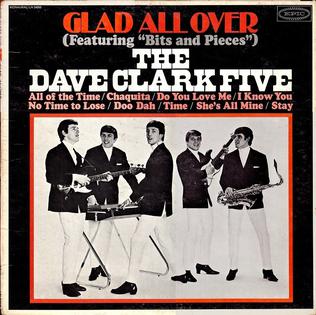 Jimmy Nicol continued as a session musician and recorded with the group The Shubdubs, and even filled in for drummer Dave Clark of The Dave Clark Five for a short time. His claim to fame, however, was his very brief tenure with The Beatles in 1964 and his unintentional inspiration for the 1967 "Sgt. Pepper” classic “Getting Better.” Jimmy Nicol continued as a session musician and recorded with the group The Shubdubs, and even filled in for drummer Dave Clark of The Dave Clark Five for a short time. His claim to fame, however, was his very brief tenure with The Beatles in 1964 and his unintentional inspiration for the 1967 "Sgt. Pepper” classic “Getting Better.”
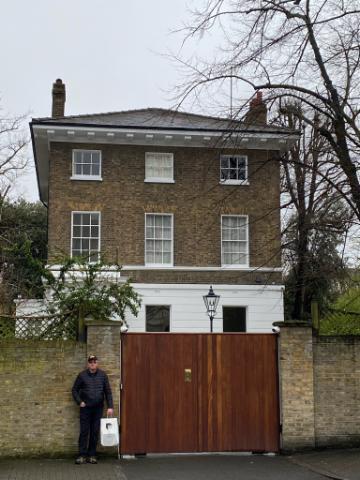
Paul's house at 7 Cavendish Avenue, St. Johns Wood, where he and John wrote "Getting Better" (author visit in 2022)
Songwriting History
Hunter Davies had the enviable privilege of becoming the biographer for The Beatles, resulting in the book “The Beatles,” first published in 1968. With this privilege came the opportunity to spend personal time with the members of the group in 1967 during the writing and recording of the “Sgt. Pepper” album.
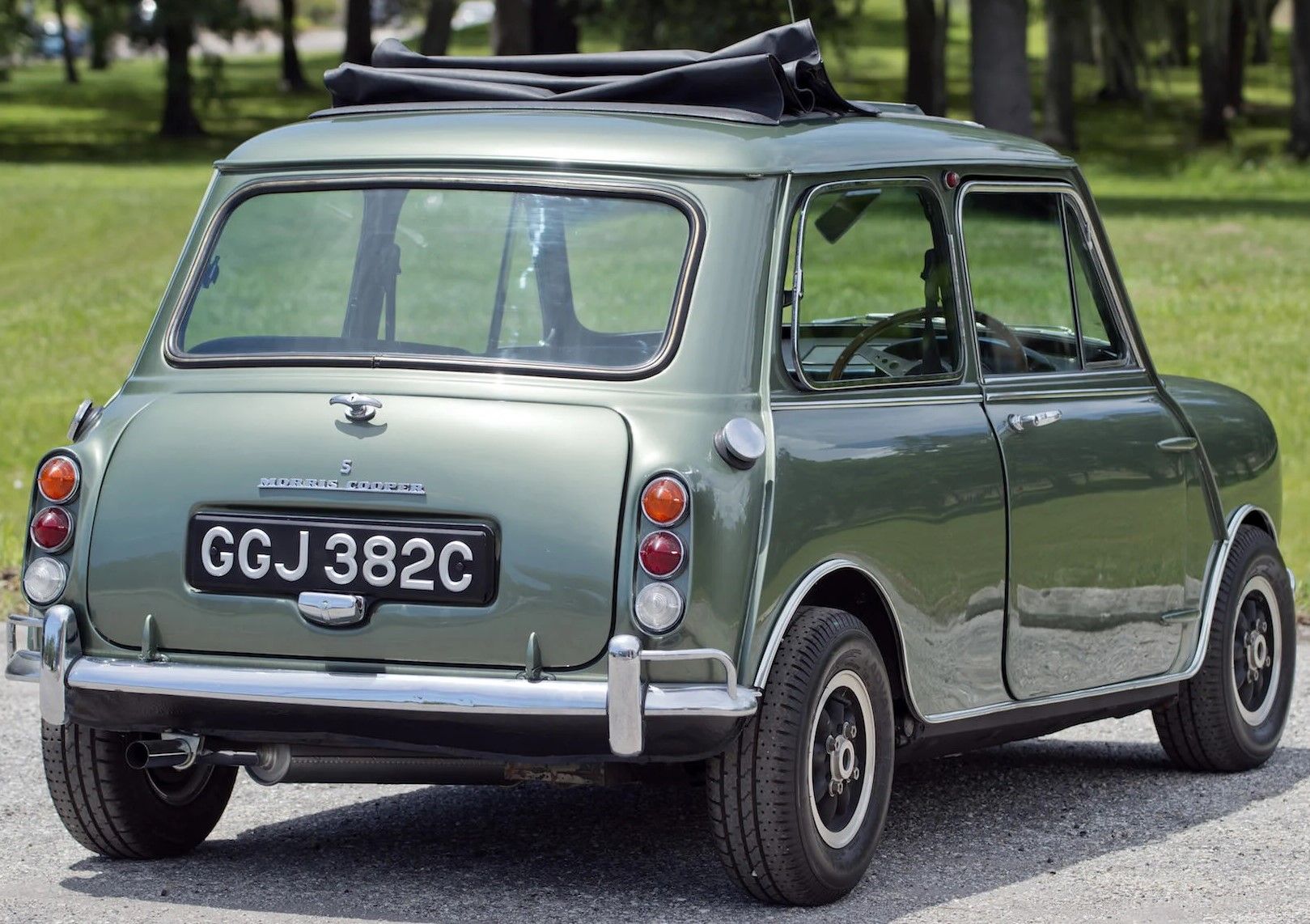 "I would go to Paul’s house and I would have tea with him, muck around and go for a walk," relates Hunter Davies. "I remember once, I was walking around Primrose Hill with Paul and his dog Martha one spring morning." This day was March 8th, 1967; a Wednesday, this being a rather unusual day off in the recording schedule for the “Sgt. Pepper” album. The book relates how “John still hadn’t arrived” for their songwriting session of the day and how McCartney had to switch from his Aston Martin to his “black-windowed Mini Cooper” to drive to Primrose Hill because the first car wouldn’t start. After he eventually got there, “he parked the car and left it without locking it. He never locks his cars.” "I would go to Paul’s house and I would have tea with him, muck around and go for a walk," relates Hunter Davies. "I remember once, I was walking around Primrose Hill with Paul and his dog Martha one spring morning." This day was March 8th, 1967; a Wednesday, this being a rather unusual day off in the recording schedule for the “Sgt. Pepper” album. The book relates how “John still hadn’t arrived” for their songwriting session of the day and how McCartney had to switch from his Aston Martin to his “black-windowed Mini Cooper” to drive to Primrose Hill because the first car wouldn’t start. After he eventually got there, “he parked the car and left it without locking it. He never locks his cars.”
 Hunter Davies continues on: “It was the first spring-like morning of that year, and as we got to the top of the hill, the sun came up. Paul turned to me and said, ‘It’s getting better,’ meaning that spring was here. Then, he started laughing and I asked him what he was laughing about, and he said it reminded him of something that the reserve drummer, Jimmy Nicol, used to say at the end of every concert.” Hunter Davies continues on: “It was the first spring-like morning of that year, and as we got to the top of the hill, the sun came up. Paul turned to me and said, ‘It’s getting better,’ meaning that spring was here. Then, he started laughing and I asked him what he was laughing about, and he said it reminded him of something that the reserve drummer, Jimmy Nicol, used to say at the end of every concert.”
 McCartney’s memory of this event had faded with time. “Ideas are ideas,” he explains in his book “Many Years From Now,” “you don’t always remember where you had them, but what you do remember is writing them. Where I start remembering it is where I actually hit chords and discover the music, that’s where my memory starts to kick in 'cause that’s the important bit; the casual thought that set it off isn’t too important to me.” McCartney’s memory of this event had faded with time. “Ideas are ideas,” he explains in his book “Many Years From Now,” “you don’t always remember where you had them, but what you do remember is writing them. Where I start remembering it is where I actually hit chords and discover the music, that’s where my memory starts to kick in 'cause that’s the important bit; the casual thought that set it off isn’t too important to me.”
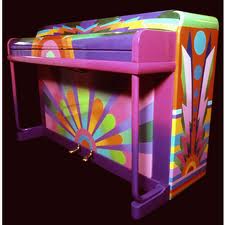 Hunter Davies then writes: "Then, in his little studio in his house, Paul began working out a tune on his guitar." Paul remembers it differently. “’Getting Better’ I wrote on my magic Binder, Edwards and Vaughan piano in my music room. It had a lovely tone...you would just open the lid and there was a magic tone, almost out of tune, and of course the way it was painted added to the fun of it all.” Hunter Davies then writes: "Then, in his little studio in his house, Paul began working out a tune on his guitar." Paul remembers it differently. “’Getting Better’ I wrote on my magic Binder, Edwards and Vaughan piano in my music room. It had a lovely tone...you would just open the lid and there was a magic tone, almost out of tune, and of course the way it was painted added to the fun of it all.”
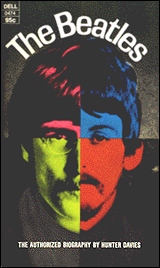 In his "The Beatles" biography, Hunter Davies continues on: “That day at two o’clock, when John came around to write a new song (he later remembers the time being seven o’clock), Paul suggested: ‘Let’s do a song called “It’s Getting Better.”’ So they got going, both playing, singing, improvising, and messing around. When the tune was at last taking shape, Paul said, ‘You’ve got to admit, it is getting better.’ ‘Did you say, “You’ve got to admit, it’s getting better”?’ Then Lennon sang that as well. So it went on till two in the morning.” In his "The Beatles" biography, Hunter Davies continues on: “That day at two o’clock, when John came around to write a new song (he later remembers the time being seven o’clock), Paul suggested: ‘Let’s do a song called “It’s Getting Better.”’ So they got going, both playing, singing, improvising, and messing around. When the tune was at last taking shape, Paul said, ‘You’ve got to admit, it is getting better.’ ‘Did you say, “You’ve got to admit, it’s getting better”?’ Then Lennon sang that as well. So it went on till two in the morning.”
 “It’s an optimistic song,” Paul explains. “I often try and get on to optimistic subjects in an effort to cheer myself up and also, realizing that other people are going to hear this, to cheer them up too. And this was one of those. The ‘angry young man’ and all that was John and I filling in the verses about schoolteachers. We shared a lot of feelings against teachers who had punished you too much or who hadn’t understood you or who had just been bastards generally. So there are references to them.” “It’s an optimistic song,” Paul explains. “I often try and get on to optimistic subjects in an effort to cheer myself up and also, realizing that other people are going to hear this, to cheer them up too. And this was one of those. The ‘angry young man’ and all that was John and I filling in the verses about schoolteachers. We shared a lot of feelings against teachers who had punished you too much or who hadn’t understood you or who had just been bastards generally. So there are references to them.”
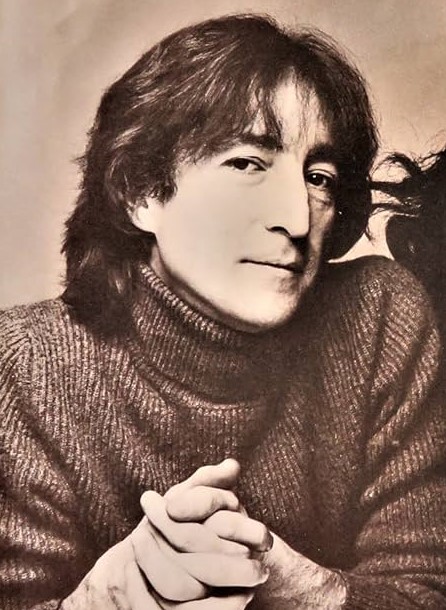 “It is a diary form of writing,” Lennon said in 1980. “All that ‘I used to be cruel to my woman, I beat her and kept her apart from the things that she loved,’ was me. I used to be cruel to my woman, and psychically, any woman. I was a hitter! I couldn’t express myself and I hit. I fought men and hit women. That is why I am always on about peace, you see. It is the most violent people who go for love and peace. Everything’s the opposite, but I sincerely believe in love and peace. I am a violent man who has learned not to be violent and regrets his violence. I will have to be a lot older before I can face in public how I treated women as a youngster.” “It is a diary form of writing,” Lennon said in 1980. “All that ‘I used to be cruel to my woman, I beat her and kept her apart from the things that she loved,’ was me. I used to be cruel to my woman, and psychically, any woman. I was a hitter! I couldn’t express myself and I hit. I fought men and hit women. That is why I am always on about peace, you see. It is the most violent people who go for love and peace. Everything’s the opposite, but I sincerely believe in love and peace. I am a violent man who has learned not to be violent and regrets his violence. I will have to be a lot older before I can face in public how I treated women as a youngster.”
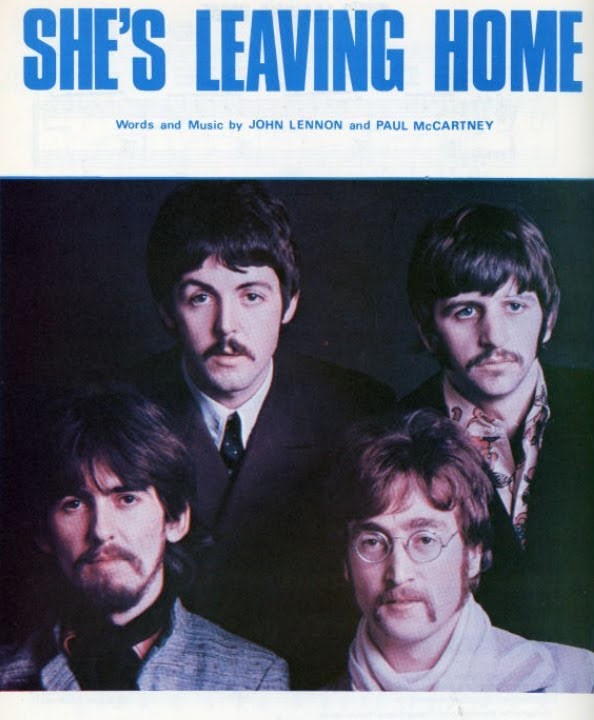 While at Paul’s house that day, John came up with one other contribution to the chorus. McCartney explains: “I was sitting there doing ‘getting better all the time’ and John just said in his laconic way, ‘It couldn’t get no worse,’ and I thought, ‘Oh, brilliant!’ This is exactly why I love writing with John. He'd done it on a lot of other occasions; he had done a Greek chorus thing on ‘She’s Leaving Home,’ he just answers. It was one of the ways we’d write. I’d have the song quite mapped out and he would come in with a counter-melody, so it was a simple ordinary story.” While at Paul’s house that day, John came up with one other contribution to the chorus. McCartney explains: “I was sitting there doing ‘getting better all the time’ and John just said in his laconic way, ‘It couldn’t get no worse,’ and I thought, ‘Oh, brilliant!’ This is exactly why I love writing with John. He'd done it on a lot of other occasions; he had done a Greek chorus thing on ‘She’s Leaving Home,’ he just answers. It was one of the ways we’d write. I’d have the song quite mapped out and he would come in with a counter-melody, so it was a simple ordinary story.”
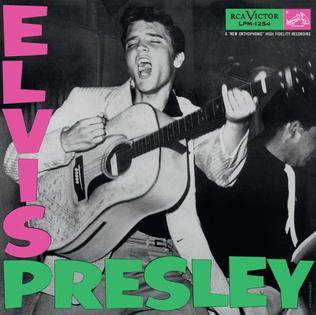 Paul also explains about some of the phrases used in the composiiton, saying: “It’s funny, I used to think of the bad grammar coming from Chuck Berry but it’s actually more Jamaican, like writing in slang. It just appeared in one of the verses, it felt nice, it scanned nicely, rather than “I used to be an angry young man,’ ‘me used…’ We’d always grab at those things, lots of precedents with Elvis, ‘ain’t never done no wrong.’ At school the teachers would have said, ‘Isn’t it terrible grammar?’ and you’d say, ‘Yeah, isn’t it great?’” Paul also explains about some of the phrases used in the composiiton, saying: “It’s funny, I used to think of the bad grammar coming from Chuck Berry but it’s actually more Jamaican, like writing in slang. It just appeared in one of the verses, it felt nice, it scanned nicely, rather than “I used to be an angry young man,’ ‘me used…’ We’d always grab at those things, lots of precedents with Elvis, ‘ain’t never done no wrong.’ At school the teachers would have said, ‘Isn’t it terrible grammar?’ and you’d say, ‘Yeah, isn’t it great?’”
Recording History
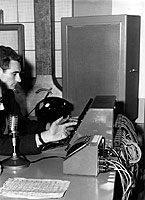 The next day, March 9th, 1967, was the first day the band brought the recently written “Getting Better” to EMI Studio Two, the session scheduled to begin at 7 pm. It may have been scheduled to begin then, but their habit around this time was quite different. “I remember the session was booked to begin at 7 pm,” remembers engineer Malcolm Addey, the resident Cliff Richard engineer who filled in for Geoff Emerick on this day. He adds: “but there was barely a Beatle in sight much before midnight, and we were sitting around waiting. They eventually straggled in one by one. Ringo came in around 11 and ordered fish and chips. The others arrived later, they all hung around and finally started work at about one in the morning. The ego trip of the big-time artists had started to set in…I know their method of working upset Geoff from time to time.” The next day, March 9th, 1967, was the first day the band brought the recently written “Getting Better” to EMI Studio Two, the session scheduled to begin at 7 pm. It may have been scheduled to begin then, but their habit around this time was quite different. “I remember the session was booked to begin at 7 pm,” remembers engineer Malcolm Addey, the resident Cliff Richard engineer who filled in for Geoff Emerick on this day. He adds: “but there was barely a Beatle in sight much before midnight, and we were sitting around waiting. They eventually straggled in one by one. Ringo came in around 11 and ordered fish and chips. The others arrived later, they all hung around and finally started work at about one in the morning. The ego trip of the big-time artists had started to set in…I know their method of working upset Geoff from time to time.”
 In his 2007 biography “Here, There And Everywhere,” Geoff Emerick explains: “Malcolm Addey, he of the cigar and never-ending chatter, filled in for me that evening. Ken Townsend was recruited to substitute for Richard (Lush). Ken (Townsend) was actually really a maintenance engineer, but I suppose George (Martin) just wanted a familiar face around, someone whom the group had at least met before. I suspected that the four Beatles were annoyed that I wasn’t there – there was no way they wanted a stranger engineering their sessions.” Graham Kirkby was also recruited that evening as 2nd engineer, so the usual three-man EMI staff became four on this occasion. In his 2007 biography “Here, There And Everywhere,” Geoff Emerick explains: “Malcolm Addey, he of the cigar and never-ending chatter, filled in for me that evening. Ken Townsend was recruited to substitute for Richard (Lush). Ken (Townsend) was actually really a maintenance engineer, but I suppose George (Martin) just wanted a familiar face around, someone whom the group had at least met before. I suspected that the four Beatles were annoyed that I wasn’t there – there was no way they wanted a stranger engineering their sessions.” Graham Kirkby was also recruited that evening as 2nd engineer, so the usual three-man EMI staff became four on this occasion.
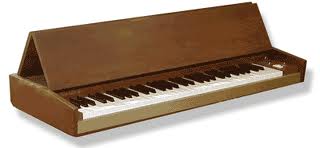 They also chatted about other things. When they got bored they went off and played on their own on any instruments lying around. There was an electronic piano in the corner of the studio, left over from someone else’s recording session. Someone doodled on it and the group decided to use it.” This turned out to be a Hohner Pianet C electric piano. This was the first Beatles session at which biographer Hunter Davies was present, so he reveals in his book how the group learned and arranged the song from the ground up. “Paul played the new song on the piano, la-la-ing the accompaniment or banging in tune to his words, to give the others an idea of what it sounded like. Ringo and George said they liked it; so did George Martin…They discussed what the general sound would be like and what sort of instruments to use. They also chatted about other things. When they got bored they went off and played on their own on any instruments lying around. There was an electronic piano in the corner of the studio, left over from someone else’s recording session. Someone doodled on it and the group decided to use it.” This turned out to be a Hohner Pianet C electric piano. This was the first Beatles session at which biographer Hunter Davies was present, so he reveals in his book how the group learned and arranged the song from the ground up. “Paul played the new song on the piano, la-la-ing the accompaniment or banging in tune to his words, to give the others an idea of what it sounded like. Ringo and George said they liked it; so did George Martin…They discussed what the general sound would be like and what sort of instruments to use.
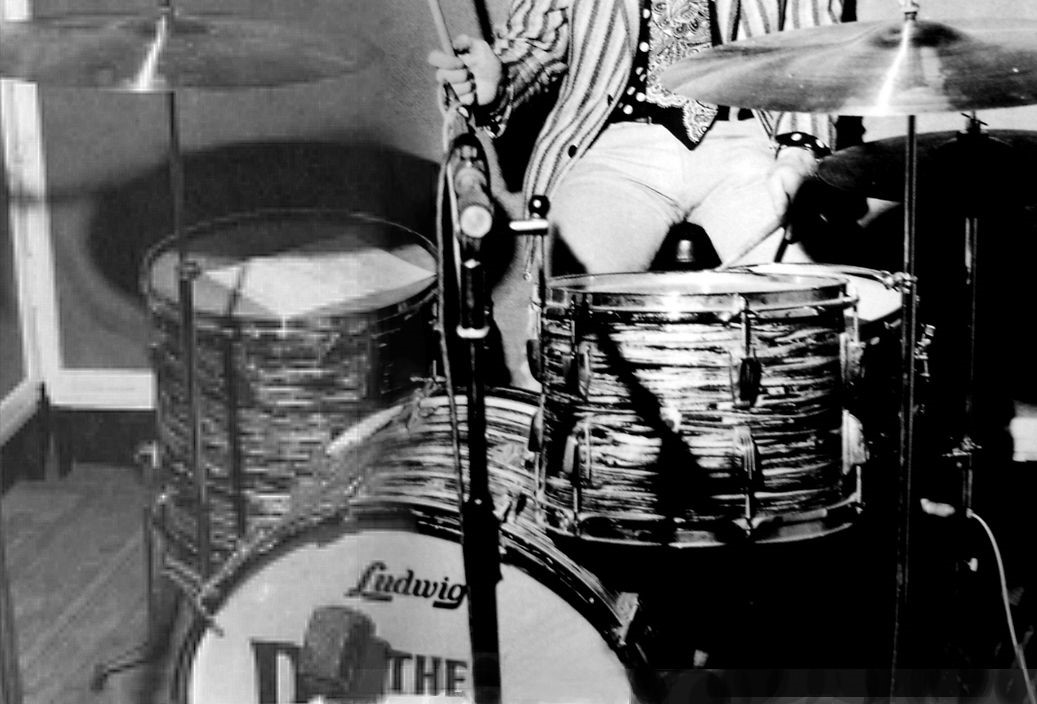 Hunter Davies then contines: “Ringo sat at his drums and played what he thought would be a good drum backing, with Paul singing the song into his ear. Because of the noise, Paul had to shout in Ringo’s ear as he explained something. After about two hours of trying out little bits and pieces, they had the elements of a backing…The first stage in the layer-cake system they now use in recording songs was to get the backing recorded on one track. George Martin and two studio technicians, who’d been sitting around just waiting, went up into their soundproof glass-front control room, where they continued to sit around and wait for The Beatles to get themselves organized.” Hunter Davies then contines: “Ringo sat at his drums and played what he thought would be a good drum backing, with Paul singing the song into his ear. Because of the noise, Paul had to shout in Ringo’s ear as he explained something. After about two hours of trying out little bits and pieces, they had the elements of a backing…The first stage in the layer-cake system they now use in recording songs was to get the backing recorded on one track. George Martin and two studio technicians, who’d been sitting around just waiting, went up into their soundproof glass-front control room, where they continued to sit around and wait for The Beatles to get themselves organized.”
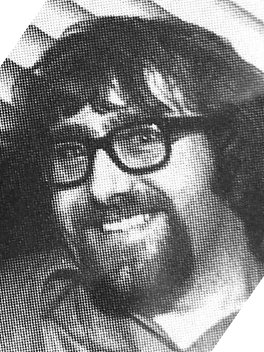 “Neil (Aspinall) and Mal (Evans) got the instruments and microphones arranged in one corner of the studio and the four or them at last started to sing and play 'It’s Getting Better.' Ringo looked a bit lost, sitting slightly apart on his own, surrounded by his drums. The others had their heads together over one microphone. They played the song over around ten times. All that was being recorded up in the soundproof box were the instruments, not voices. From time to time Paul said, ‘Once more, let’s try it this way,’ or ‘Let’s have less bass,’ or ‘more drums.’ By around midnight they had recorded the backing.” “Neil (Aspinall) and Mal (Evans) got the instruments and microphones arranged in one corner of the studio and the four or them at last started to sing and play 'It’s Getting Better.' Ringo looked a bit lost, sitting slightly apart on his own, surrounded by his drums. The others had their heads together over one microphone. They played the song over around ten times. All that was being recorded up in the soundproof box were the instruments, not voices. From time to time Paul said, ‘Once more, let’s try it this way,’ or ‘Let’s have less bass,’ or ‘more drums.’ By around midnight they had recorded the backing.”
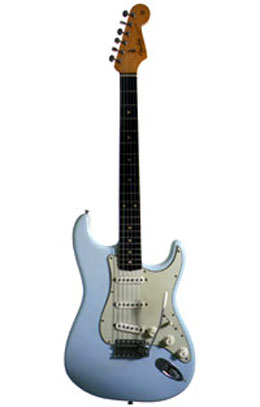 The instrumentation used on this rhythm track, as witnessed on "take one" included on various 50th Anniversary editions of the "Sgt. Pepper" album, consisted of Paul on the above mentioned Hohner Pianet, George on electric guitar, John on distorted bass guitar and Ringo on drums. Following George Martin announcing from the control room "'Getting Better,' take one" and the group fiddling around on their instruments for a moment or two, John instructs Paul to sing the vocals off microphone as a guide for the recording. "Sing it, you know, uh, 'I gotta admit I'm a,' and all that, promptly," John asks, "if you can think, you know." After Paul replies, John continues, "but just say 'one, two,' 'cause it knows we cut out." Then John immediately begins this first take by hitting eight bass notes to establish the beat, joined in by Paul on electric piano thereafter. "Take one," with Paul's guide vocal being quietly heard in the background, only made it to the beginning of the third verse, breaking down because they didn't have the arrangement solidified yet. Ringo then apologetically explains, "I keep forgetting on that part to just always join in on that..." and then demonstrates his quarter-note beats on his kick drum. The instrumentation used on this rhythm track, as witnessed on "take one" included on various 50th Anniversary editions of the "Sgt. Pepper" album, consisted of Paul on the above mentioned Hohner Pianet, George on electric guitar, John on distorted bass guitar and Ringo on drums. Following George Martin announcing from the control room "'Getting Better,' take one" and the group fiddling around on their instruments for a moment or two, John instructs Paul to sing the vocals off microphone as a guide for the recording. "Sing it, you know, uh, 'I gotta admit I'm a,' and all that, promptly," John asks, "if you can think, you know." After Paul replies, John continues, "but just say 'one, two,' 'cause it knows we cut out." Then John immediately begins this first take by hitting eight bass notes to establish the beat, joined in by Paul on electric piano thereafter. "Take one," with Paul's guide vocal being quietly heard in the background, only made it to the beginning of the third verse, breaking down because they didn't have the arrangement solidified yet. Ringo then apologetically explains, "I keep forgetting on that part to just always join in on that..." and then demonstrates his quarter-note beats on his kick drum.
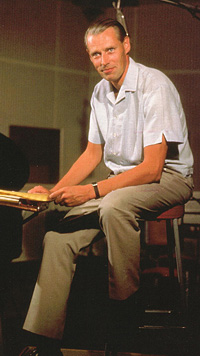 According to Mark Lewisohn's informative 1988 book "The Beatles Recording Sessions," George Martin also played on this rhythm track, the producer “playing piano, though not via a keyboard but by actually striking the strings.” This element is definately not heard in this initial take, George Martin's annoucement of "take one" clearly coming from the control room and not from the studio floor. Apparently he must have contributed this piano part in later takes of the song. Also heard in the finished recording is an actual piano performed in the second verse, which may also have been played by George Martin during the rhythm track on this day since it is not mentioned at all in the later recording sessions. In any event, seven takes were recorded on this day, "take seven" being deemed best. Each Beatle had his one individual track on the four-track tape, George Martin's contribution being combined in there somewhere. According to Mark Lewisohn's informative 1988 book "The Beatles Recording Sessions," George Martin also played on this rhythm track, the producer “playing piano, though not via a keyboard but by actually striking the strings.” This element is definately not heard in this initial take, George Martin's annoucement of "take one" clearly coming from the control room and not from the studio floor. Apparently he must have contributed this piano part in later takes of the song. Also heard in the finished recording is an actual piano performed in the second verse, which may also have been played by George Martin during the rhythm track on this day since it is not mentioned at all in the later recording sessions. In any event, seven takes were recorded on this day, "take seven" being deemed best. Each Beatle had his one individual track on the four-track tape, George Martin's contribution being combined in there somewhere.
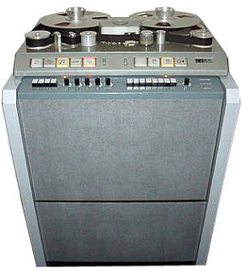 With all four tracks of the four-track tape filled up, the EMI engineering staff then made a reduction mix, combining all four tracks onto a single track of another tape, leaving three empty tracks for further recording elements. They tried five times to create this mix until they were satisfied, "take 12" being deemed best. By 3:30 am the next morning, the first “Getting Better” session was finally over. With all four tracks of the four-track tape filled up, the EMI engineering staff then made a reduction mix, combining all four tracks onto a single track of another tape, leaving three empty tracks for further recording elements. They tried five times to create this mix until they were satisfied, "take 12" being deemed best. By 3:30 am the next morning, the first “Getting Better” session was finally over.
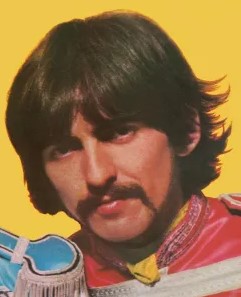 After a much needed two day vacation, engineers Geoff Emerick and Richard Lush were back on the job the next day (that is to say, later that day) for the second session of the song on March 10th, 1967 in EMI Studio Two. Geoff Emerick remembers the details of this day's work: “’Glad to have you back, Geoff,’ George Harrison said as soon as he walked into the door. Malcolm (Addey) had clearly gotten on his nerves. When we played back the tapes of the previous evening’s work in the control room, Ringo chimed in. ‘The drums sound a bit naff, don’t you think?’ Harrison didn’t even wait for an answer. ‘Little wonder, considering that Malcolm didn’t shut up long enough to get a decent drum sound.’” After a much needed two day vacation, engineers Geoff Emerick and Richard Lush were back on the job the next day (that is to say, later that day) for the second session of the song on March 10th, 1967 in EMI Studio Two. Geoff Emerick remembers the details of this day's work: “’Glad to have you back, Geoff,’ George Harrison said as soon as he walked into the door. Malcolm (Addey) had clearly gotten on his nerves. When we played back the tapes of the previous evening’s work in the control room, Ringo chimed in. ‘The drums sound a bit naff, don’t you think?’ Harrison didn’t even wait for an answer. ‘Little wonder, considering that Malcolm didn’t shut up long enough to get a decent drum sound.’”
 “I had to agree with Ringo’s opinion,” Geoff Emerick adds, “but I was surprised that he hadn’t said anything to Addey the night before, because he usually wasn’t shy about expressing his opinion if he heard something he didn’t like. Perhaps he just couldn’t get a word in edgewise! Malcolm had obviously utilized his own setup for recording the drums…I thought the snare sound was especially lacking, and it took a lot of work during the mixing stage to get the track to fit in sonically with the rest of the album.” “I had to agree with Ringo’s opinion,” Geoff Emerick adds, “but I was surprised that he hadn’t said anything to Addey the night before, because he usually wasn’t shy about expressing his opinion if he heard something he didn’t like. Perhaps he just couldn’t get a word in edgewise! Malcolm had obviously utilized his own setup for recording the drums…I thought the snare sound was especially lacking, and it took a lot of work during the mixing stage to get the track to fit in sonically with the rest of the album.”
 "That night, George Harrison was overdubbing his tamboura," Geoff Emerick relates, "which may have been another reason why he was in a good mood and was being unusually friendly toward me." This tamboura drone, as heard exclusively during the third verse, works perfectly to add an evil-sounding backdrop to the lyrics about being “cruel to my woman” and beating her. This was recorded onto track four of the new tape while Ringo overdubbed more drums onto track two. "That night, George Harrison was overdubbing his tamboura," Geoff Emerick relates, "which may have been another reason why he was in a good mood and was being unusually friendly toward me." This tamboura drone, as heard exclusively during the third verse, works perfectly to add an evil-sounding backdrop to the lyrics about being “cruel to my woman” and beating her. This was recorded onto track four of the new tape while Ringo overdubbed more drums onto track two.
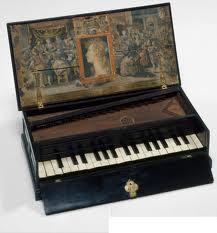 Also overdubbed at this session (track unknown) was “George Martin adding an interesting new texture,” remembered Geoff Emerick, “by playing selected notes on a Virginal, a miniature harpsichord which he owned and brought in specially for the session.” Also overdubbed at this session (track unknown) was “George Martin adding an interesting new texture,” remembered Geoff Emerick, “by playing selected notes on a Virginal, a miniature harpsichord which he owned and brought in specially for the session.”
 Geoff Emerick then clearly relates how George Harrison, George Martin, Ringo and Lennon “headed out the door; it had been a tiring session and it was well past midnight. But it was a Friday, with a whole weekend ahead to recover, so Paul decided to stay behind with Richard (Lush) and me, and we dutifully pulled his amp out into the middle of the room for another long marathon of laying down the bass part. I decided to surreptitiously add just a touch of reverb to the bass that night, using the bathroom as an acoustic echo chamber. It was an effect that Paul normally didn’t like, but I was looking for a little extra roundness, so I decided to try it. When he heard the playback, Paul immediately realized what I had done and screwed his face up, but he went along with it for just that one song.” Geoff Emerick then clearly relates how George Harrison, George Martin, Ringo and Lennon “headed out the door; it had been a tiring session and it was well past midnight. But it was a Friday, with a whole weekend ahead to recover, so Paul decided to stay behind with Richard (Lush) and me, and we dutifully pulled his amp out into the middle of the room for another long marathon of laying down the bass part. I decided to surreptitiously add just a touch of reverb to the bass that night, using the bathroom as an acoustic echo chamber. It was an effect that Paul normally didn’t like, but I was looking for a little extra roundness, so I decided to try it. When he heard the playback, Paul immediately realized what I had done and screwed his face up, but he went along with it for just that one song.”
 This bass guitar overdub, which was recorded onto 'track three' of the tape, was used as the primary bass part in the song, the bass part John performed on the rhythm track the previous day being purposely mixed down somewhat during the tape reduction made at this session. At 4 am Saturday morning, this second “Getting Better” session was finally complete. This bass guitar overdub, which was recorded onto 'track three' of the tape, was used as the primary bass part in the song, the bass part John performed on the rhythm track the previous day being purposely mixed down somewhat during the tape reduction made at this session. At 4 am Saturday morning, this second “Getting Better” session was finally complete.
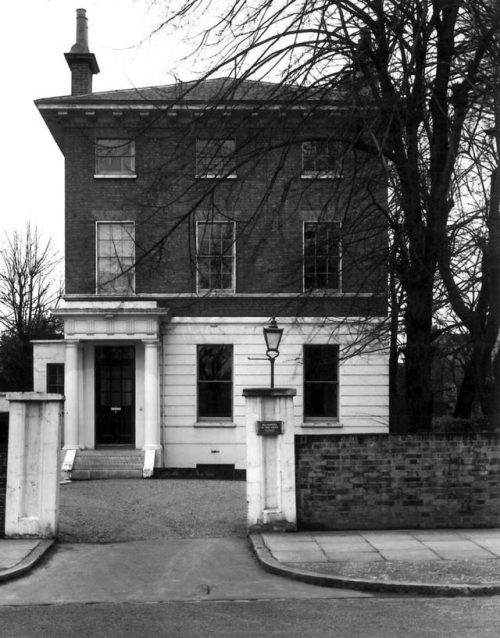 After concentrating on other “Sgt. Pepper” songs for the next week-and-a-half, The Beatles returned to “Getting Better” on March 21st, 1967. Before the session began that day, they needed to work out the vocal arrangement. “John and George assembled at Paul’s house,” Hunter Davies continues to explain. “Ringo wasn’t there. They were just going to do the singing track for ‘It’s Getting Better’ and he wouldn’t be needed. Ivan Vaughan, the school friend of John and Paul, was also at Paul’s house. At seven thirty they all moved around to EMI Studios where George Martin, like a very understanding housemaster, was ready and waiting for them.” After concentrating on other “Sgt. Pepper” songs for the next week-and-a-half, The Beatles returned to “Getting Better” on March 21st, 1967. Before the session began that day, they needed to work out the vocal arrangement. “John and George assembled at Paul’s house,” Hunter Davies continues to explain. “Ringo wasn’t there. They were just going to do the singing track for ‘It’s Getting Better’ and he wouldn’t be needed. Ivan Vaughan, the school friend of John and Paul, was also at Paul’s house. At seven thirty they all moved around to EMI Studios where George Martin, like a very understanding housemaster, was ready and waiting for them.”
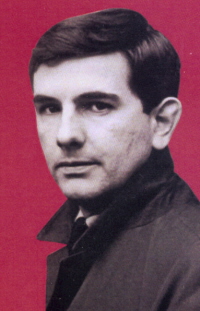 Hunter Davies continues with his play-by-play account of this recording session, which once again was in EMI Studio Two. “A technician played the backing for ‘It’s Getting Better.’ It was played over and over again. George Harrison and Ivan went off to chat in a corner, but Paul and John listened carefully. Paul instructed the technician which levers to press, telling him what he wanted, how it should be done, which bits he liked the best. George Martin looked on, giving advice where necessary. John Lennon stared into space.” Hunter Davies continues with his play-by-play account of this recording session, which once again was in EMI Studio Two. “A technician played the backing for ‘It’s Getting Better.’ It was played over and over again. George Harrison and Ivan went off to chat in a corner, but Paul and John listened carefully. Paul instructed the technician which levers to press, telling him what he wanted, how it should be done, which bits he liked the best. George Martin looked on, giving advice where necessary. John Lennon stared into space.”
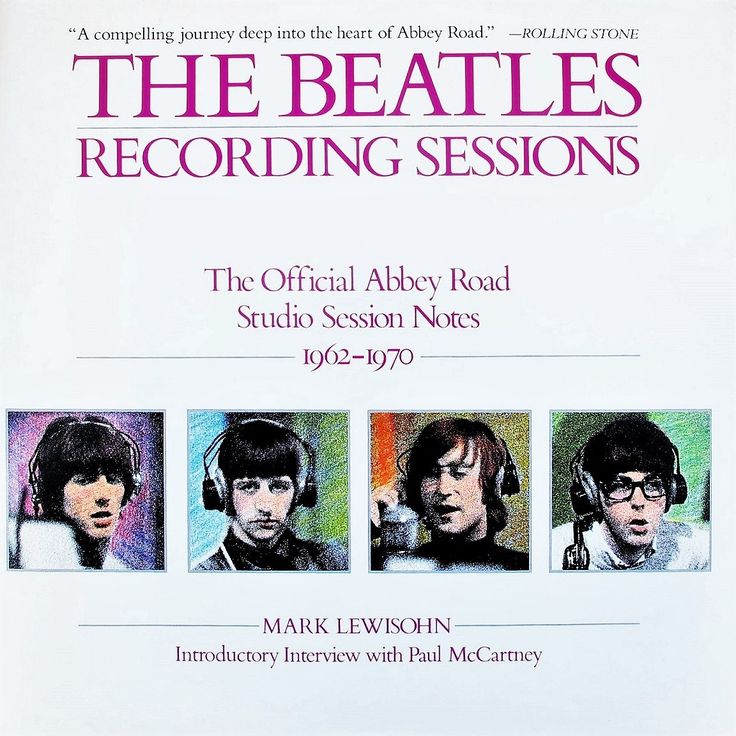 Mark Lewisohn’s account in his informative 1988 book "The Beatles Recording Sessions" explains: “At one point in the evening, after repeated listening to the...rhythm track recording of the song, Paul decided that Ringo needed to re-record his drums. He was duly telephoned at his home and summoned to the studio. (John picked up the phone: ‘Ringo on toast, please,’ according to Hunter Davies.) But after Paul McCartney and Geoff Emerick had played with a few knobs and switches on the console, McCartney pronounced the original recording fine after all so Ringo was telephoned again and cancelled. ‘We never heard how he felt,’ says Hunter Davies, ‘but he must have been pretty choked, having got himself ready for work and the long drive in from Surrey only to be told he wasn’t needed.’” Mark Lewisohn’s account in his informative 1988 book "The Beatles Recording Sessions" explains: “At one point in the evening, after repeated listening to the...rhythm track recording of the song, Paul decided that Ringo needed to re-record his drums. He was duly telephoned at his home and summoned to the studio. (John picked up the phone: ‘Ringo on toast, please,’ according to Hunter Davies.) But after Paul McCartney and Geoff Emerick had played with a few knobs and switches on the console, McCartney pronounced the original recording fine after all so Ringo was telephoned again and cancelled. ‘We never heard how he felt,’ says Hunter Davies, ‘but he must have been pretty choked, having got himself ready for work and the long drive in from Surrey only to be told he wasn’t needed.’”
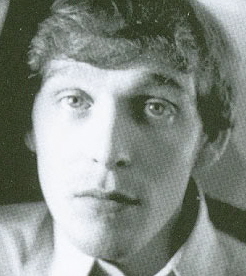 Hunter Davies continues on: “The studio was made ready to record the sound track, the voices. As it was being set up by Neil (Aspinall), Mal (Evans) brought in tea and orange juice on a tray. Paul let his tea go cold while he played with an oscillating box he had found in a corner…Then they were ready at last. The three of them held their heads around one microphone and sang…In the studio itself, all that could be heard were the unaccompanied, unelectrified voices of The Beatles singing, without any backing. It all sounded flat and off key.” In the book “The Beatles Recording Sessions,” Hunter Davies described their voices as “grainy, hoarse and awfully disembodied. I remember thinking, 'Why am I such a big fan of theirs, why do I think they’re good singers? They’re completely out of tune!'” Hunter Davies continues on: “The studio was made ready to record the sound track, the voices. As it was being set up by Neil (Aspinall), Mal (Evans) brought in tea and orange juice on a tray. Paul let his tea go cold while he played with an oscillating box he had found in a corner…Then they were ready at last. The three of them held their heads around one microphone and sang…In the studio itself, all that could be heard were the unaccompanied, unelectrified voices of The Beatles singing, without any backing. It all sounded flat and off key.” In the book “The Beatles Recording Sessions,” Hunter Davies described their voices as “grainy, hoarse and awfully disembodied. I remember thinking, 'Why am I such a big fan of theirs, why do I think they’re good singers? They’re completely out of tune!'”
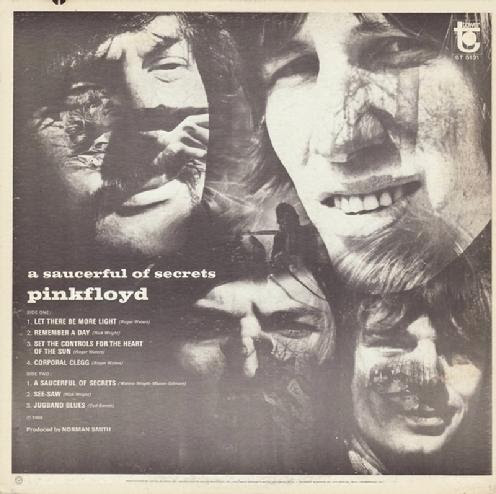 During this time, while Ivan Vaughan was “writing a letter to his mother” and Neil Aspinall was “filling in his diary” that he said “he should have started…about five years ago,” a visitor then appeared in the control room to ask George Martin a favor. This visitor was The Beatles' previous engineer Norman Smith. Hunter Davies then remembers: “A man in a purple shirt called Norman (Smith) arrived; he used to be one of their recording engineers and now had a group of his own, ‘The Pink Floyd.’ Very politely he asked George Martin if his boys could possibly pop in to see The Beatles at work. George (Martin) smiled unhelpfully. Norman (Smith) said perhaps he should ask John personally, as a favor. George Martin said no, that wouldn’t work. If by chance he and his boys popped in about eleven o’clock, he might just be able to see what he could do.” During this time, while Ivan Vaughan was “writing a letter to his mother” and Neil Aspinall was “filling in his diary” that he said “he should have started…about five years ago,” a visitor then appeared in the control room to ask George Martin a favor. This visitor was The Beatles' previous engineer Norman Smith. Hunter Davies then remembers: “A man in a purple shirt called Norman (Smith) arrived; he used to be one of their recording engineers and now had a group of his own, ‘The Pink Floyd.’ Very politely he asked George Martin if his boys could possibly pop in to see The Beatles at work. George (Martin) smiled unhelpfully. Norman (Smith) said perhaps he should ask John personally, as a favor. George Martin said no, that wouldn’t work. If by chance he and his boys popped in about eleven o’clock, he might just be able to see what he could do.”
 In his book "Here, There And Everywhere," Geoff Emerick explains in detail an event that occurred shortly thereafter that has gone down in history. He presents this event inferring it as happening during the vocal overdubs for “Lovely Rita,” although Hunter Davies’ eyewitness account as well as much other evidence points to this event happening at this session. Geoff Emerick's overdubbing and mixing work on “Lovely Rita” performed later on this day may have led to his confusion regarding at which session this transpired. In his book "Here, There And Everywhere," Geoff Emerick explains in detail an event that occurred shortly thereafter that has gone down in history. He presents this event inferring it as happening during the vocal overdubs for “Lovely Rita,” although Hunter Davies’ eyewitness account as well as much other evidence points to this event happening at this session. Geoff Emerick's overdubbing and mixing work on “Lovely Rita” performed later on this day may have led to his confusion regarding at which session this transpired.
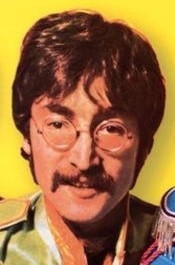 Geoff Emerick explains: “That same evening, I was witness to a bizarre scenario that seemed quite funny at the time, but could have ended tragically…biographer Hunter Davies was there, sitting unobtrusively in the back with Neil (Aspinall) and Mal (Evans), quietly observing. (Sidenote: Hunter Davies was not present at the “Lovely Rita” background vocal sessions.) John was dressed outlandishly as usual, in a festive striped blazer, but I thought he seemed unusually quiet when he first arrived. Soon afterward, he, Paul, and George Harrison were gathered around a microphone singing backing vocals when Lennon suddenly announced that he wasn’t feeling well. George Martin got on the talkback. ‘What’s the matter, John? Is it something you ate?’” Geoff Emerick explains: “That same evening, I was witness to a bizarre scenario that seemed quite funny at the time, but could have ended tragically…biographer Hunter Davies was there, sitting unobtrusively in the back with Neil (Aspinall) and Mal (Evans), quietly observing. (Sidenote: Hunter Davies was not present at the “Lovely Rita” background vocal sessions.) John was dressed outlandishly as usual, in a festive striped blazer, but I thought he seemed unusually quiet when he first arrived. Soon afterward, he, Paul, and George Harrison were gathered around a microphone singing backing vocals when Lennon suddenly announced that he wasn’t feeling well. George Martin got on the talkback. ‘What’s the matter, John? Is it something you ate?’”
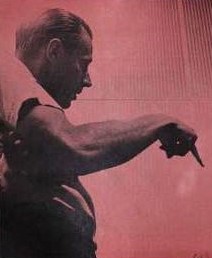 "The others sniggered but John remained perfectly solemn. ‘No, it’s not that,’ Lennon replied. ‘I’m just having trouble focusing.’ Up in the control room, Richard (Lush) and I exchanged glances. ‘Uh-huh,’ we thought. ‘That would be the drugs kicking in.’ But George Martin didn’t seem to have an inkling of what was going on." In his book "With A Little Help From My Friends," George Martin recalled that John "looked up at me. 'George,' he said slowly, 'I'm not feeling too good. I'm not focusing on me.' This was a pretty odd thing to say, even for John. I studied him. I'd been oblivious to it until then, but he did look pretty awful - not sick, but twitchy and strange...‘Do you want to be driven home?’ he asked. ‘No,’ Lennon said in a tiny, faraway voice. ‘Well then, perhaps you’d like to get a little fresh air?’ George suggested helpfully. ‘Okay,’ came the meek reply.” "The others sniggered but John remained perfectly solemn. ‘No, it’s not that,’ Lennon replied. ‘I’m just having trouble focusing.’ Up in the control room, Richard (Lush) and I exchanged glances. ‘Uh-huh,’ we thought. ‘That would be the drugs kicking in.’ But George Martin didn’t seem to have an inkling of what was going on." In his book "With A Little Help From My Friends," George Martin recalled that John "looked up at me. 'George,' he said slowly, 'I'm not feeling too good. I'm not focusing on me.' This was a pretty odd thing to say, even for John. I studied him. I'd been oblivious to it until then, but he did look pretty awful - not sick, but twitchy and strange...‘Do you want to be driven home?’ he asked. ‘No,’ Lennon said in a tiny, faraway voice. ‘Well then, perhaps you’d like to get a little fresh air?’ George suggested helpfully. ‘Okay,’ came the meek reply.”
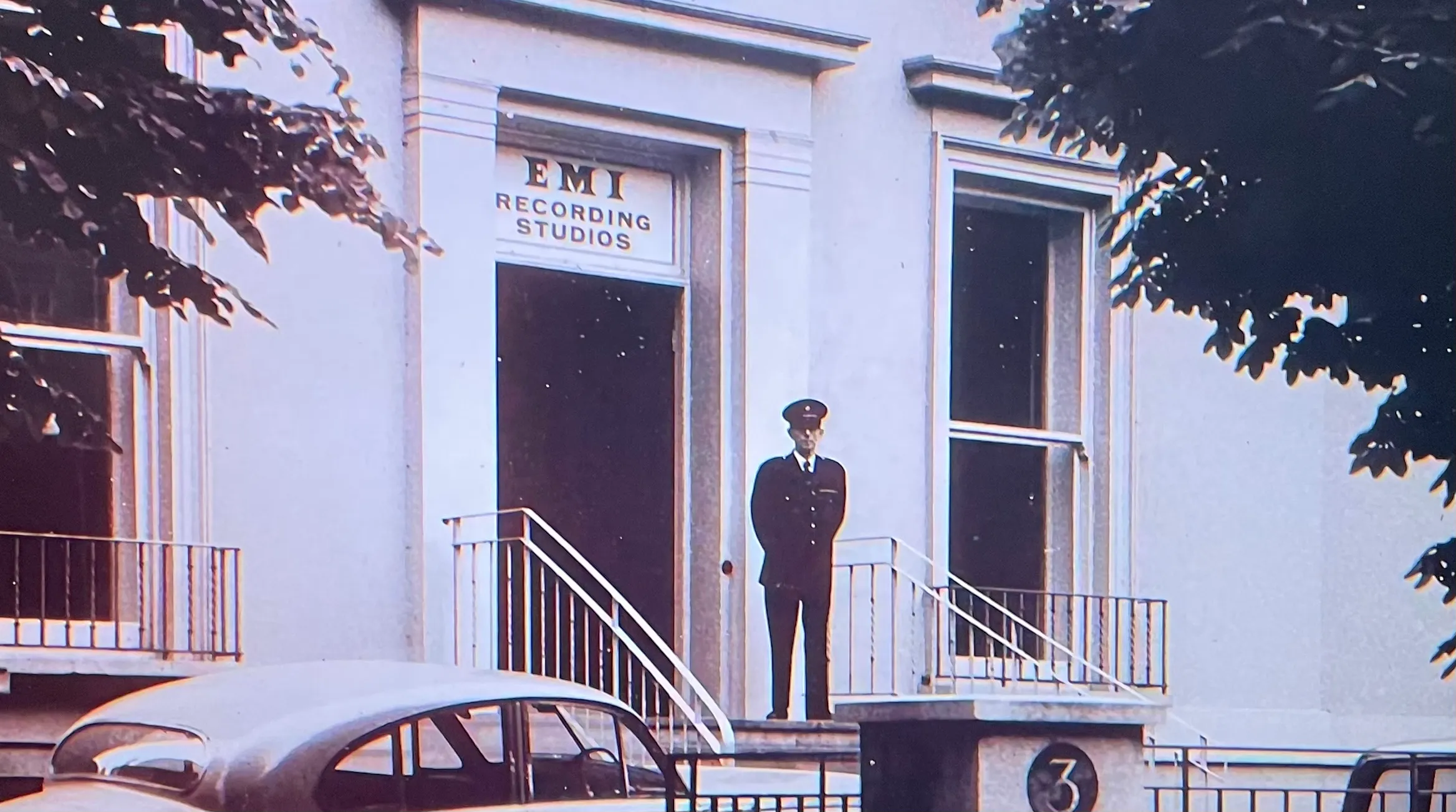 Hunter Davies explains an attempt by the group to step outside for a moment. “Someone went to open the back door of the studio. There was the sound of loud banging and cheering on the other side. The door began to move slightly inward with the strain of a gang of fans who’d somehow managed to get inside the building.” It became quite clear that another idea was needed. Hunter Davies explains an attempt by the group to step outside for a moment. “Someone went to open the back door of the studio. There was the sound of loud banging and cheering on the other side. The door began to move slightly inward with the strain of a gang of fans who’d somehow managed to get inside the building.” It became quite clear that another idea was needed.
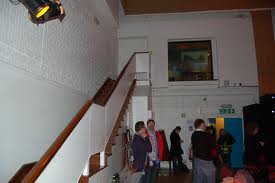 Geoff Emerick relates: “It seemed to take John a long time to get up the stairs; he was moving as if he were in slow motion. When John finally walked through the doorway into the control room, I noticed that he had a strange but glazed look on his face. Gazing vacantly around the room, John completely ignored the three of us. He appeared to be searching for something, but didn’t seem to know what it was. Suddenly he threw his head back and began staring intently at the ceiling, awestruck. With some degree of difficulty, he finally got a few not especially profound words out: ‘Wow, look at that.’ Our necks cranked upward, but all we saw was…a ceiling.” Geoff Emerick relates: “It seemed to take John a long time to get up the stairs; he was moving as if he were in slow motion. When John finally walked through the doorway into the control room, I noticed that he had a strange but glazed look on his face. Gazing vacantly around the room, John completely ignored the three of us. He appeared to be searching for something, but didn’t seem to know what it was. Suddenly he threw his head back and began staring intently at the ceiling, awestruck. With some degree of difficulty, he finally got a few not especially profound words out: ‘Wow, look at that.’ Our necks cranked upward, but all we saw was…a ceiling.”
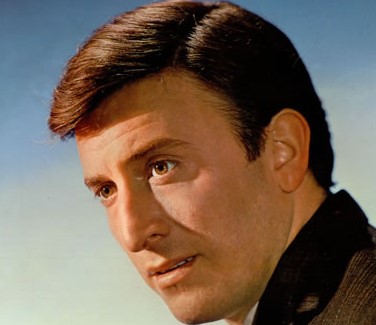 “’Come on, John, I know a way up the back stairs,’ George Martin said soothingly, leading the befuddled Beatle out of the room…George Martin returned to the control room, alone.’Where’s John?’ Paul asked. George Martin turned on the talkback mic. ‘I left him up on the roof, looking at the stars.’ ‘Ah, OK, you mean like Vince Hill?' Paul joked. Vince Hill was a schmaltzy singer who was currently topping the charts with a sappy version of the song ‘Edelweiss’ (featured in ‘The Sound Of Music’), which Paul and George Harrison immediately began singing boisterously.” “’Come on, John, I know a way up the back stairs,’ George Martin said soothingly, leading the befuddled Beatle out of the room…George Martin returned to the control room, alone.’Where’s John?’ Paul asked. George Martin turned on the talkback mic. ‘I left him up on the roof, looking at the stars.’ ‘Ah, OK, you mean like Vince Hill?' Paul joked. Vince Hill was a schmaltzy singer who was currently topping the charts with a sappy version of the song ‘Edelweiss’ (featured in ‘The Sound Of Music’), which Paul and George Harrison immediately began singing boisterously.”
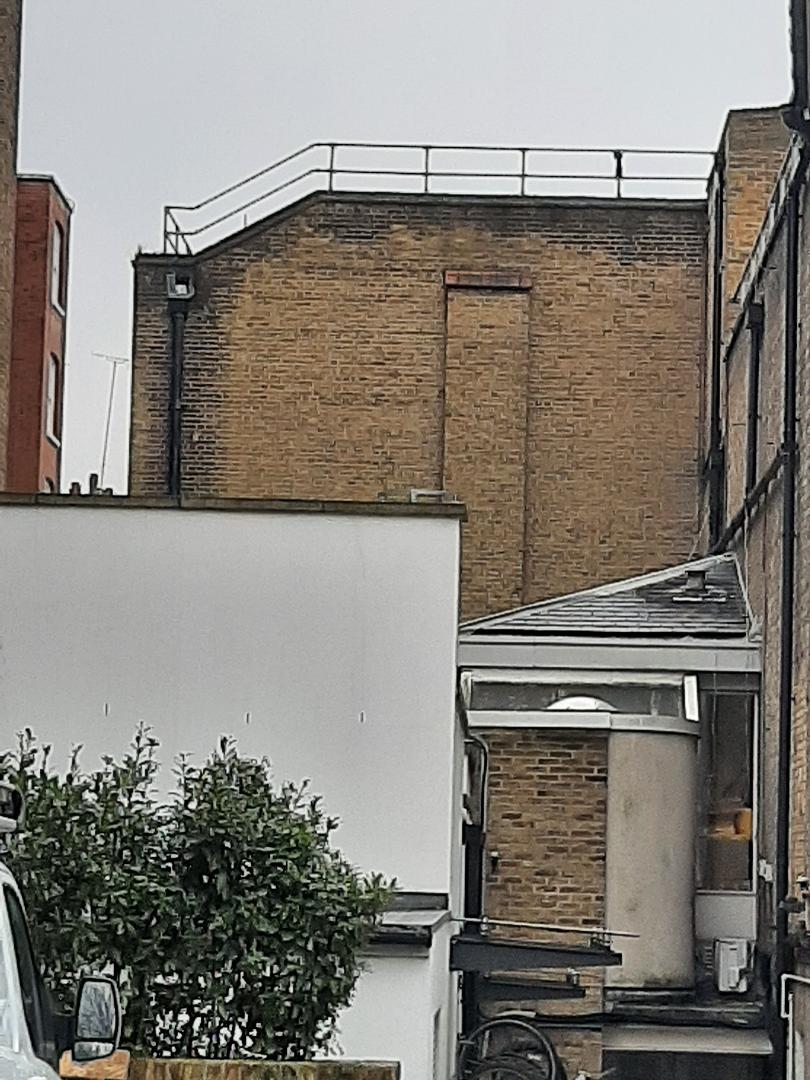 “A second or two later, it dawned on them: John was tripping on LSD and George Martin has left him up on the roof alone! As if they were actors in an old-fashioned silent movie, the two Beatles executed a perfectly timed double take and then bolted upstairs together, full speed, in a frantic dash to retrieve their compatriot. They were aware all too well that the (EMI) rooftop had only a narrow parapet and that, in Lennon's lysergically altered state, he could easily step over the edge and plummet thirty feet onto the pavement below. Roadies Mal (Evans) and Neil (Aspinall) followed closely behind, and a few tense minutes later, everyone reappeared in the control room…thankfully with a bewildered Lennon in tow, still in one piece. Nobody castigated George Martin for his poor decision, born, to be fair, out of naiveté, but arrangements were quickly made for John to be driven home and the session ended soon afterward.” “A second or two later, it dawned on them: John was tripping on LSD and George Martin has left him up on the roof alone! As if they were actors in an old-fashioned silent movie, the two Beatles executed a perfectly timed double take and then bolted upstairs together, full speed, in a frantic dash to retrieve their compatriot. They were aware all too well that the (EMI) rooftop had only a narrow parapet and that, in Lennon's lysergically altered state, he could easily step over the edge and plummet thirty feet onto the pavement below. Roadies Mal (Evans) and Neil (Aspinall) followed closely behind, and a few tense minutes later, everyone reappeared in the control room…thankfully with a bewildered Lennon in tow, still in one piece. Nobody castigated George Martin for his poor decision, born, to be fair, out of naiveté, but arrangements were quickly made for John to be driven home and the session ended soon afterward.”
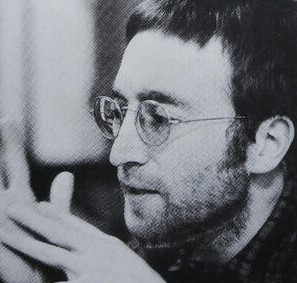 John himself explained the account in an interview in 1970. “I thought I was taking some uppers and I was not in the state of handling it. I took it and I suddenly got so scared on the mike. I said, ‘What is it? I feel ill.’ I thought I felt ill and I thought I was going cracked. I said I must go and get some air. They all took me upstairs on the roof, and George Martin was looking at me funny, and then it dawned on me that I must have taken some acid. I said, ‘Well, I can’t go on. You’ll have to do it and I’ll just stay and watch.’ I got very nervous just watching them all, and I kept saying, ‘Is this all right?’ They had all been very kind and they said, ‘Yes, it’s all right.’ I said, ‘Are you sure it’s all right?’ They carried on making the record.” John himself explained the account in an interview in 1970. “I thought I was taking some uppers and I was not in the state of handling it. I took it and I suddenly got so scared on the mike. I said, ‘What is it? I feel ill.’ I thought I felt ill and I thought I was going cracked. I said I must go and get some air. They all took me upstairs on the roof, and George Martin was looking at me funny, and then it dawned on me that I must have taken some acid. I said, ‘Well, I can’t go on. You’ll have to do it and I’ll just stay and watch.’ I got very nervous just watching them all, and I kept saying, ‘Is this all right?’ They had all been very kind and they said, ‘Yes, it’s all right.’ I said, ‘Are you sure it’s all right?’ They carried on making the record.”
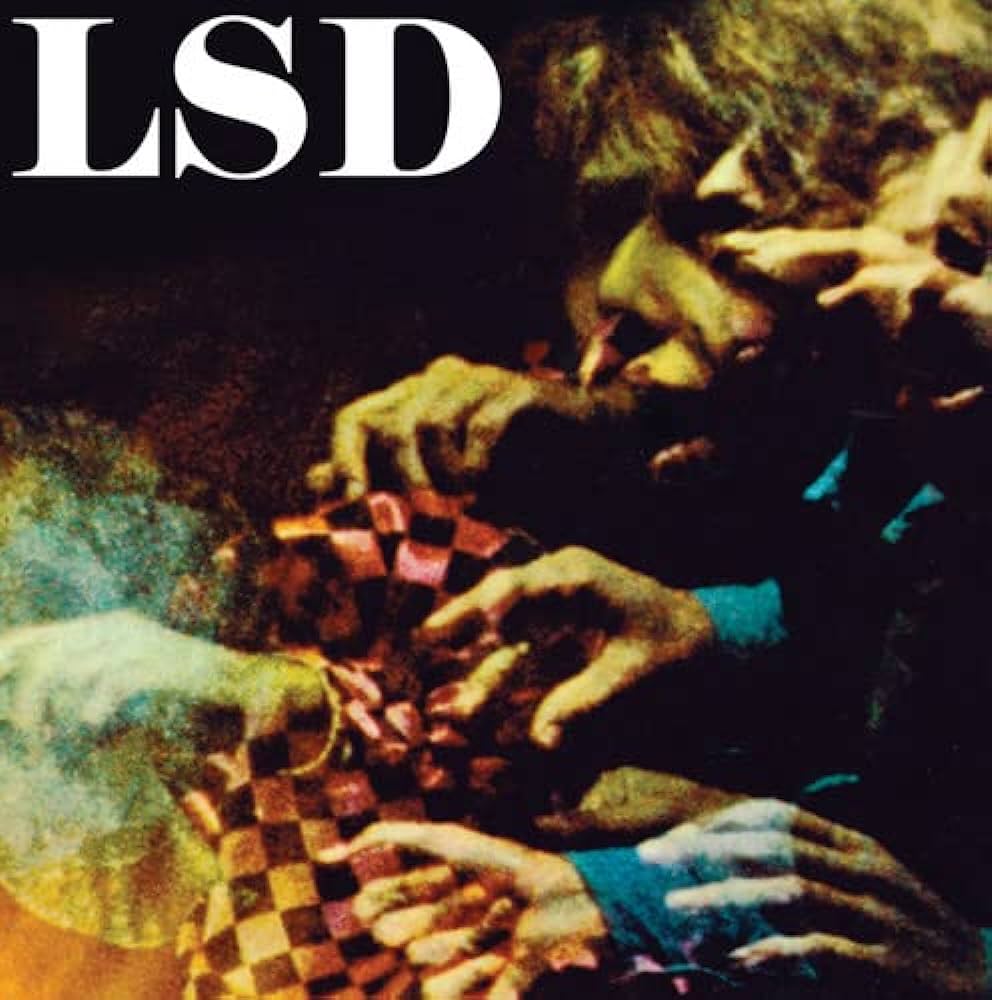 George Martin remembers: “I was so innocent that I actually took John up to the roof when he was having an LSD trip, not knowing what it was. If I’d known it was LSD, the roof would have been the last place I would have taken him…Of course, I couldn’t take him out the front because there were 500 screaming kids who’d have torn him apart. So the only place I could take him to get fresh air was the roof. It was a wonderful starry night, and John went to the edge, which was a parapet about eighteen inches high, and looked up at the stars and said, ‘Aren’t they fantastic?’ Of course, to him I suppose they would have been especially fantastic. At the time they just looked like stars to me.” George Martin remembers: “I was so innocent that I actually took John up to the roof when he was having an LSD trip, not knowing what it was. If I’d known it was LSD, the roof would have been the last place I would have taken him…Of course, I couldn’t take him out the front because there were 500 screaming kids who’d have torn him apart. So the only place I could take him to get fresh air was the roof. It was a wonderful starry night, and John went to the edge, which was a parapet about eighteen inches high, and looked up at the stars and said, ‘Aren’t they fantastic?’ Of course, to him I suppose they would have been especially fantastic. At the time they just looked like stars to me.”
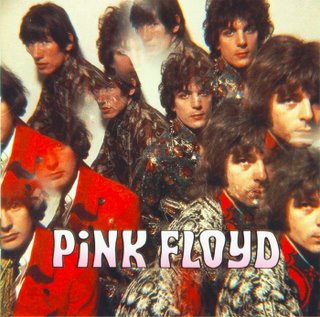 As this session was later winding down, the semi-scheduled appearance of Norman Smith and “The Pink Floyd” transpired, who then happened to be recording their first album “Piper At The Gates Of Dawn” in another EMI Studio that evening. “Sadly, he and his protégés were given a very cool reception by Paul McCartney and George Harrison,” Geoff Emerick remembers. “Univited visitors were simply not made welcome, even if they included a former workmate. After a few minutes of awkward chat (described by Hunter Davies as “half-hearted hellos”), Norman headed out the door. It was the last time he popped in on any Beatles session that I was present at. Clearly, as far as they were concerned, that was a chapter that was over.” As this session was later winding down, the semi-scheduled appearance of Norman Smith and “The Pink Floyd” transpired, who then happened to be recording their first album “Piper At The Gates Of Dawn” in another EMI Studio that evening. “Sadly, he and his protégés were given a very cool reception by Paul McCartney and George Harrison,” Geoff Emerick remembers. “Univited visitors were simply not made welcome, even if they included a former workmate. After a few minutes of awkward chat (described by Hunter Davies as “half-hearted hellos”), Norman headed out the door. It was the last time he popped in on any Beatles session that I was present at. Clearly, as far as they were concerned, that was a chapter that was over.”
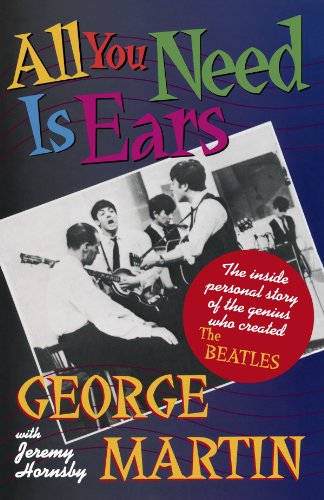 What John 'stayed and watched' after the LSD event concerned recording the piano solo for "Lovely Rita." At that point, at around midnight, the session was over as far as the group was concerned. “Paul…went home with (Lennon) and turned on as well, to keep him company,” states George Martin in his book “All You Need Is Ears,” continuing: “Paul’s thoughtfulness in going home with John was typical of one of the best sides of his character.” Meanwhile, after the official mono mix of the song “Lovely Rita” was created, the session ended at 2:45 am the next morning, the doors of EMI Studios finally closing for the day. What John 'stayed and watched' after the LSD event concerned recording the piano solo for "Lovely Rita." At that point, at around midnight, the session was over as far as the group was concerned. “Paul…went home with (Lennon) and turned on as well, to keep him company,” states George Martin in his book “All You Need Is Ears,” continuing: “Paul’s thoughtfulness in going home with John was typical of one of the best sides of his character.” Meanwhile, after the official mono mix of the song “Lovely Rita” was created, the session ended at 2:45 am the next morning, the doors of EMI Studios finally closing for the day.
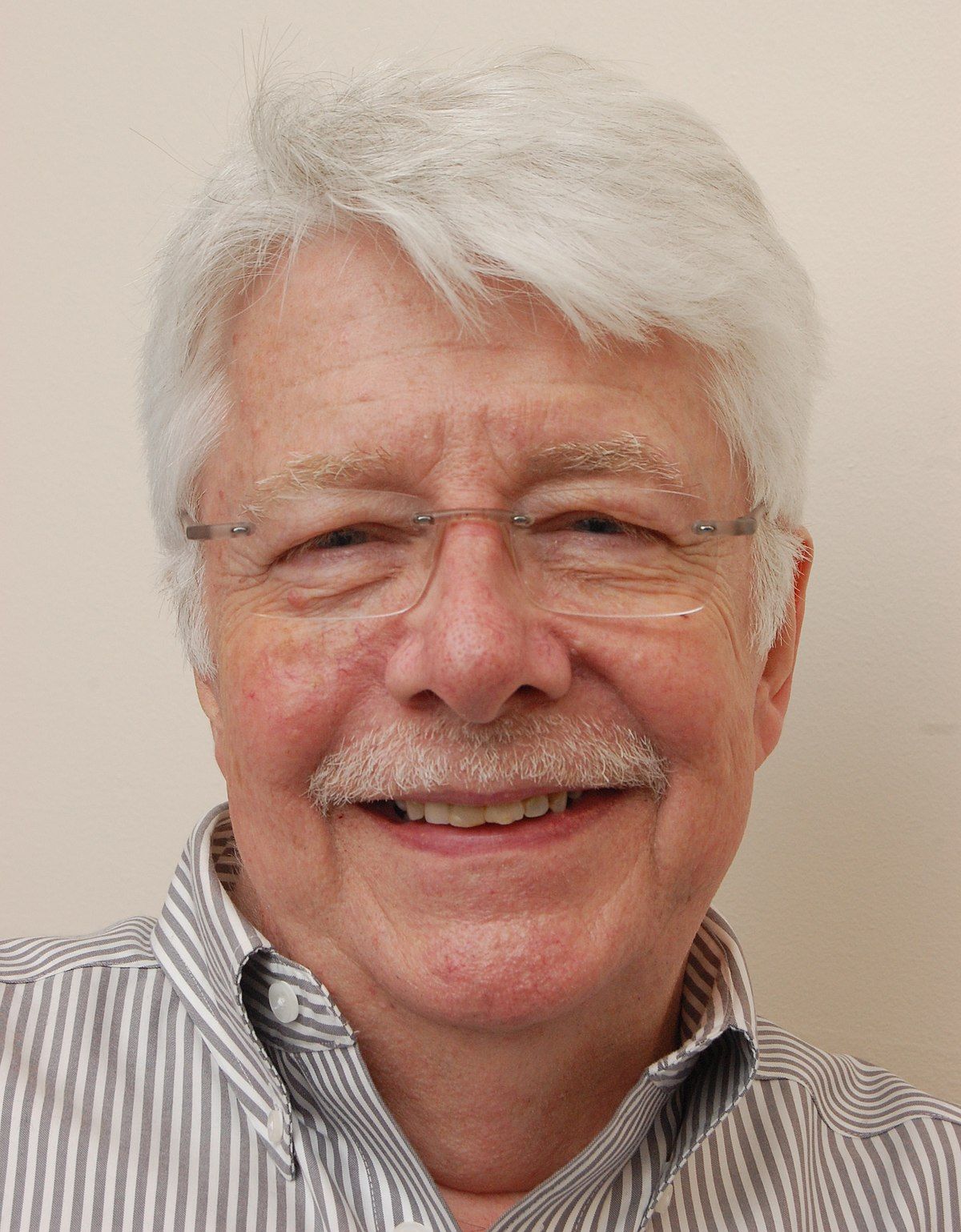 Two days later, on March 23rd, 1967, the last overdub session for “Getting Better” occurred. The session was scheduled to begin at 7 pm in EMI Studio Two, this time with not only Geoff Emerick and Richard Lush unavailable but even George Martin had a prior commitment. Peter Vince stood in, acting as both producer and engineer while Ken Scott sat in as 2nd engineer. Given the unusual circumstances with John during the previous attempt at vocals, this session saw them totally re-record the vocals and then double-track them, adding handclaps along the way. (I guess Hunter Davies’ assessment of them sounding “completely out of tune” was valid after all.) Two days later, on March 23rd, 1967, the last overdub session for “Getting Better” occurred. The session was scheduled to begin at 7 pm in EMI Studio Two, this time with not only Geoff Emerick and Richard Lush unavailable but even George Martin had a prior commitment. Peter Vince stood in, acting as both producer and engineer while Ken Scott sat in as 2nd engineer. Given the unusual circumstances with John during the previous attempt at vocals, this session saw them totally re-record the vocals and then double-track them, adding handclaps along the way. (I guess Hunter Davies’ assessment of them sounding “completely out of tune” was valid after all.)
 Peter Vince performed a further tape reduction in order to clear up some space for more overdubs, Ringo’s conga drums, which first come in on the third verse of the song, being one of them. It appears that a further guitar overdub was performed as well, this being the staccato "chopping" guitar that is panned to the right channel in the stereo mix. Its player is not known, although given Paul’s specific interest in the arrangement of this piece, it’s probably him. Three mono mixes of the song were made, no doubt with the input of the group, the third being deemed best. The session ended at 3:45 am the next morning. Peter Vince performed a further tape reduction in order to clear up some space for more overdubs, Ringo’s conga drums, which first come in on the third verse of the song, being one of them. It appears that a further guitar overdub was performed as well, this being the staccato "chopping" guitar that is panned to the right channel in the stereo mix. Its player is not known, although given Paul’s specific interest in the arrangement of this piece, it’s probably him. Three mono mixes of the song were made, no doubt with the input of the group, the third being deemed best. The session ended at 3:45 am the next morning.
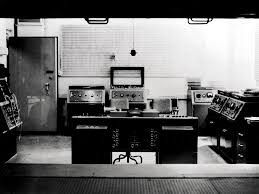 The stereo mix of this song was created on April 17th, 1967 in the EMI Studio Two control room by the usual team of George Martin, Geoff Emerick and Richard Lush. Only one attempt at this stereo mix was needed to get it right. The original rhythm track, the tamboura and the open hi-hat hits are panned to the left channel while all the vocals are centered in the mix. The piano, conga drums and the ‘chopping’ guitar are all panned to the right channel. The stereo mix of this song was created on April 17th, 1967 in the EMI Studio Two control room by the usual team of George Martin, Geoff Emerick and Richard Lush. Only one attempt at this stereo mix was needed to get it right. The original rhythm track, the tamboura and the open hi-hat hits are panned to the left channel while all the vocals are centered in the mix. The piano, conga drums and the ‘chopping’ guitar are all panned to the right channel.
 George Martin's son, Giles Martin, along with engineer Sam Okell, returned to the original tapes to create a new stereo mix of "Getting Better" sometime in either 2016 or early 2017 for inclusion on the 50th Anniversary release of the "Sgt. Pepper" album. This vibrant new mix, patterned after the superior 1967 mono mix, was accompanied by two new mixes of early takes, namely "take one" of the rhythm track and "take 12," which were included on specific editions of this 50th Anniversary release. George Martin's son, Giles Martin, along with engineer Sam Okell, returned to the original tapes to create a new stereo mix of "Getting Better" sometime in either 2016 or early 2017 for inclusion on the 50th Anniversary release of the "Sgt. Pepper" album. This vibrant new mix, patterned after the superior 1967 mono mix, was accompanied by two new mixes of early takes, namely "take one" of the rhythm track and "take 12," which were included on specific editions of this 50th Anniversary release.
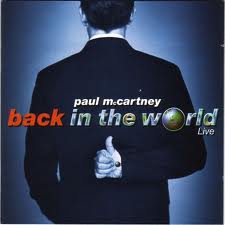 Sometime between April 1st and May 18th of 2002, Paul and his band had a live recording of the song done, which was released in America on the album “Back In The US” and internationally on the album “Back In The World.” Sometime between April 1st and May 18th of 2002, Paul and his band had a live recording of the song done, which was released in America on the album “Back In The US” and internationally on the album “Back In The World.”
Song Structure and Style
Although musicologists vary on terminology, “Getting Better” appears to make use of both a chorus and a refrain, something that is quite unique in The Beatles catalog. That being said, the structure used consists of ‘verse/ chorus/ verse/ chorus/ refrain/ verse/ chorus/ refrain’ (or ababcabc) with a brief introduction and conclusion thrown in for good measure.
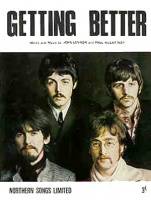 A simple four-measure introduction begins the song, the opening two measures consisting of two electric guitars playing in a "chopping" rhythm, one on the F chord and one playing in G high up on the neck (with a couple of extra beats thrown in to establish a swing beat), thus creating a jazzy ninth chord that will be a recurring feature of the song. Simultaneously we hear someone in the far off distance counting out measures (“four, five, six”) indicating that something was edited out of the final mix. The third measure brings in the home key of C major while the first guitar disappears and is replaced by Paul's electric piano playing from the rhythm track. John, Paul and George come in at this point with a preview of the refrain harmonies we’ll hear later. The fourth measure debuts Ringo on snare drum with a brief roll and then marching beat to set the stage. A simple four-measure introduction begins the song, the opening two measures consisting of two electric guitars playing in a "chopping" rhythm, one on the F chord and one playing in G high up on the neck (with a couple of extra beats thrown in to establish a swing beat), thus creating a jazzy ninth chord that will be a recurring feature of the song. Simultaneously we hear someone in the far off distance counting out measures (“four, five, six”) indicating that something was edited out of the final mix. The third measure brings in the home key of C major while the first guitar disappears and is replaced by Paul's electric piano playing from the rhythm track. John, Paul and George come in at this point with a preview of the refrain harmonies we’ll hear later. The fourth measure debuts Ringo on snare drum with a brief roll and then marching beat to set the stage.
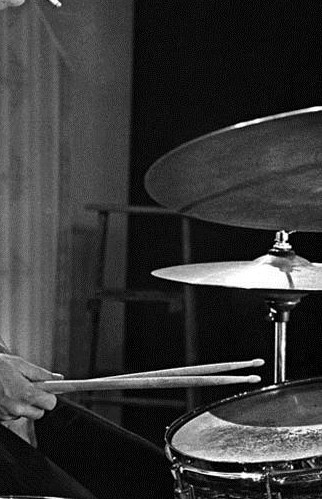 The first eight-measure verse then begins, with Paul singing a single-tracked lead vocal with unison backing vocals (possibly John and George) sung in falsetto. These backing vocals fill in the gaps left from the lead vocals in an answering fashion, although they are sung in the first person as if they also are the lead singer (“No, I can’t complain”). Ringo performs a steady march-like beat on the drum kit without any cymbals except for open hi-hat hits that appear on the syncopated half-beat before four in every measure. Paul’s bass plays mostly alternating octaves of G while touches of guitar work accents the arrangement. Also, a sustained high G note is heard throughout the verse, this possibly being the Virginal miniature Harpsichord mentioned by Geoff Emerick. The first eight-measure verse then begins, with Paul singing a single-tracked lead vocal with unison backing vocals (possibly John and George) sung in falsetto. These backing vocals fill in the gaps left from the lead vocals in an answering fashion, although they are sung in the first person as if they also are the lead singer (“No, I can’t complain”). Ringo performs a steady march-like beat on the drum kit without any cymbals except for open hi-hat hits that appear on the syncopated half-beat before four in every measure. Paul’s bass plays mostly alternating octaves of G while touches of guitar work accents the arrangement. Also, a sustained high G note is heard throughout the verse, this possibly being the Virginal miniature Harpsichord mentioned by Geoff Emerick.
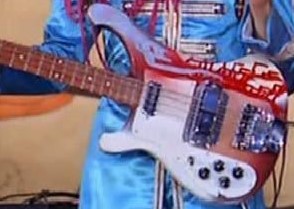 The first chorus is next heard, which is eight measures long as well. Paul's lead vocal now is double-tracked while the falsetto singing is now doing harmonies instead of just unison, slightly overlapping the counter-line “it can’t get no worse” with the reemergence of Paul’s lead vocal line in measure five. Paul's electric piano is apparent once again as a contrast to the second appearance of the high G guitar performance first heard in the intro. Paul’s bass now plays what appears to be an ad-libbed counter-melody. Ringo plays a straight drum beat with steady hits to his closed hi-hat but without the use of the kick drum (surprisingly) and gives the open hi-hat hits a rest for this section of the song. The first chorus is next heard, which is eight measures long as well. Paul's lead vocal now is double-tracked while the falsetto singing is now doing harmonies instead of just unison, slightly overlapping the counter-line “it can’t get no worse” with the reemergence of Paul’s lead vocal line in measure five. Paul's electric piano is apparent once again as a contrast to the second appearance of the high G guitar performance first heard in the intro. Paul’s bass now plays what appears to be an ad-libbed counter-melody. Ringo plays a straight drum beat with steady hits to his closed hi-hat but without the use of the kick drum (surprisingly) and gives the open hi-hat hits a rest for this section of the song.
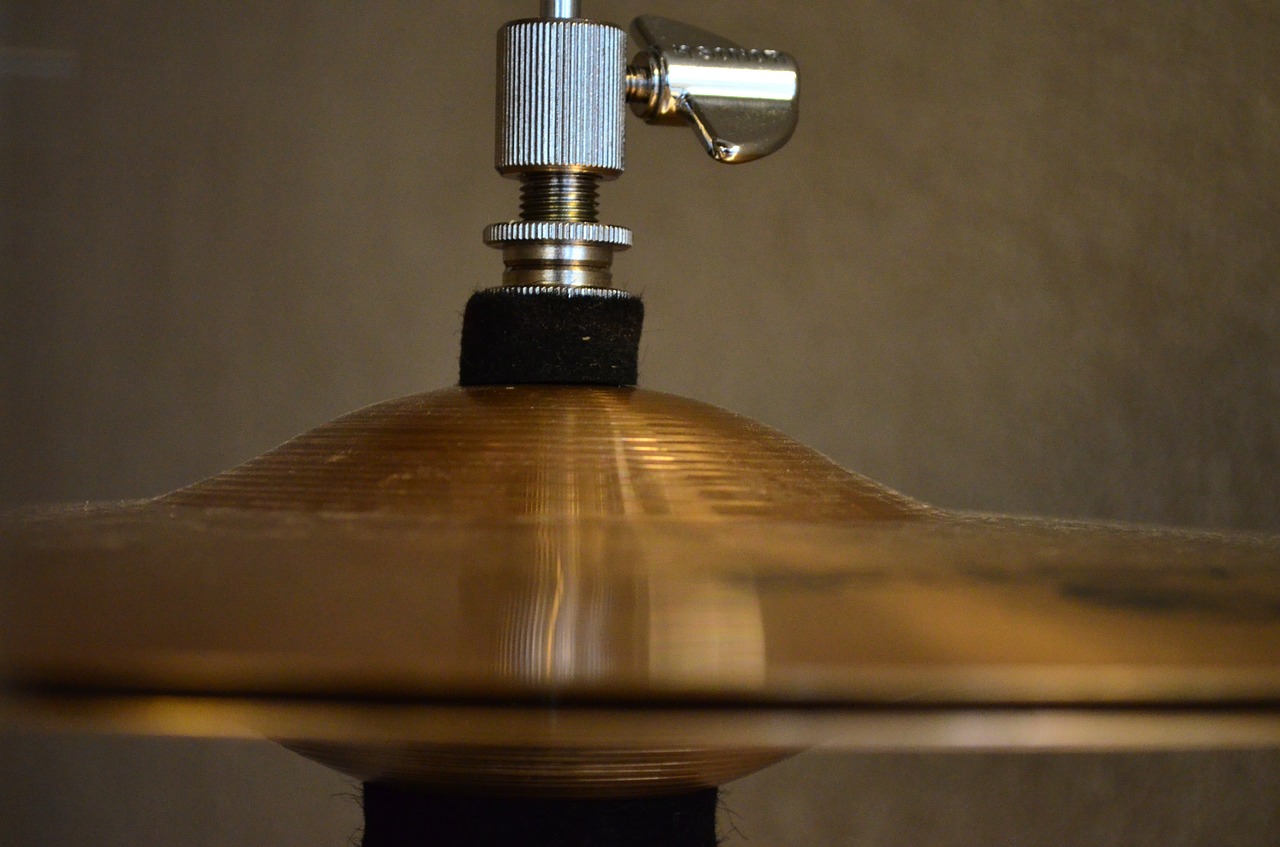 This segues straight into the second verse, this one being ten measures long due to the addition of two introductory measures to set the mood. Ringo returns to his cymbal-less drum beat and open hi-hat hits while guitar and an overdubbed piano comes to the fore. A stray whistle is heard toward the end of the second measure just before Paul’s vocals appear, these the singer overdubbed himself throughout this verse in a lower harmony. Handclaps are now heard on the two-beat of every measure and Paul returns to his octave alternating bass playing. This segues straight into the second verse, this one being ten measures long due to the addition of two introductory measures to set the mood. Ringo returns to his cymbal-less drum beat and open hi-hat hits while guitar and an overdubbed piano comes to the fore. A stray whistle is heard toward the end of the second measure just before Paul’s vocals appear, these the singer overdubbed himself throughout this verse in a lower harmony. Handclaps are now heard on the two-beat of every measure and Paul returns to his octave alternating bass playing.
 The second appearance of the chorus is next, which is structurally and instrumentally identical to the first chorus. Listen, however, for a double-hit of Ringo’s closed hi-hat on the third beat of the fourth measure (on the word “get” from the backing vocals), this possibly being the result of an edit in the rhythm track. The second appearance of the chorus is next, which is structurally and instrumentally identical to the first chorus. Listen, however, for a double-hit of Ringo’s closed hi-hat on the third beat of the fourth measure (on the word “get” from the backing vocals), this possibly being the result of an edit in the rhythm track.
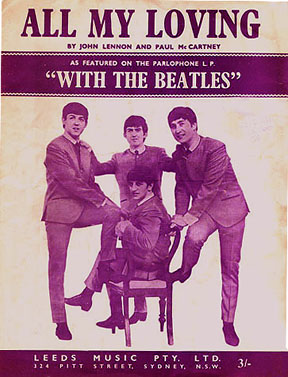 The flow of this chorus extends directly into the first refrain of this song (referred to in this review as a "refrain" instead of a "bridge" because its use here is to conclude the song’s structure and not as a "bridge" to another part of the song – refer to “All My Loving” as an example of their use of a "refrain"). This refrain is ten measures in length and also keeps the same instrumentation in place as heard in the chorus that precedes it. The backing vocalists harmonize with the lead vocals in the same configuration as heard in the introduction of the song. The fifth and sixth measures, as well as the ninth and tenth measures, present Paul’s double-tracked lead vocal line “better” in falsetto and sustaining while John and George layer harmonized “better, better” vocals on top of Paul. The flow of this chorus extends directly into the first refrain of this song (referred to in this review as a "refrain" instead of a "bridge" because its use here is to conclude the song’s structure and not as a "bridge" to another part of the song – refer to “All My Loving” as an example of their use of a "refrain"). This refrain is ten measures in length and also keeps the same instrumentation in place as heard in the chorus that precedes it. The backing vocalists harmonize with the lead vocals in the same configuration as heard in the introduction of the song. The fifth and sixth measures, as well as the ninth and tenth measures, present Paul’s double-tracked lead vocal line “better” in falsetto and sustaining while John and George layer harmonized “better, better” vocals on top of Paul.
 This brings us to the startling third verse, which is actually eleven measures long. Once again, the first two measures are instrumental, but drastically different from anything heard thus far. The entire instrumentation drops out except for a simple closed hi-hat beat from the rhythm track to keep the beat progressing. The instruments are replaced by George’s droning tamboura and Ringo’s overdubbed conga drum beat accented with handclaps on the four-beat of every measure. Starting with the third measure, Paul and John harmonize a progressively rhythmic lyric concerning being “cruel to my woman” which dramatically alters the pattern of the melody lines of the first two verses. This new melody line continues through to the end of the sixth measure, the seventh measure being added into the verse to allow breathing space and time for the impact of the lyrics to sink in, also re-introducing the normal verse instrumentation into the mix. The handclaps, tamboura and conga drums still see the verse to its conclusion while the second vocal melody line of this verse is also altered from other verses and still harmonized by Paul and John. This brings us to the startling third verse, which is actually eleven measures long. Once again, the first two measures are instrumental, but drastically different from anything heard thus far. The entire instrumentation drops out except for a simple closed hi-hat beat from the rhythm track to keep the beat progressing. The instruments are replaced by George’s droning tamboura and Ringo’s overdubbed conga drum beat accented with handclaps on the four-beat of every measure. Starting with the third measure, Paul and John harmonize a progressively rhythmic lyric concerning being “cruel to my woman” which dramatically alters the pattern of the melody lines of the first two verses. This new melody line continues through to the end of the sixth measure, the seventh measure being added into the verse to allow breathing space and time for the impact of the lyrics to sink in, also re-introducing the normal verse instrumentation into the mix. The handclaps, tamboura and conga drums still see the verse to its conclusion while the second vocal melody line of this verse is also altered from other verses and still harmonized by Paul and John.
 The third and final chorus now appears, which contains the identical instrumentation as the previous two aside from the addition of the conga drums which continue to be heard until the song ends. Lyrically, however, McCartney alters “I’ve got to admit” and “I have to admit” from the previous choruses to “I admit” and “Yes, I admit,” respectively. The third and final chorus now appears, which contains the identical instrumentation as the previous two aside from the addition of the conga drums which continue to be heard until the song ends. Lyrically, however, McCartney alters “I’ve got to admit” and “I have to admit” from the previous choruses to “I admit” and “Yes, I admit,” respectively.
The final refrain then comes in with yet another overdubbed, and even higher pitched, guitar 'chopping' on G. This refrain is otherwise identical to the previous one apart from the addition of the conga drums. With the momentum flowing, a three-measure conclusion comes next which is actually a repeat of the first two measures of the refrain and then holding out the final C chord. As the chord rings out, all that is left is the high pitched guitar chopping and the conga drums which then proceed to fade out of sight six measures later.
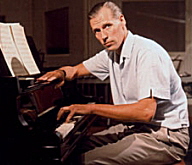 Paul appears in control of proceedings here, singing infectious lead vocals as usual while regaling us with innovative bass guitar work and electric piano playing. John makes a prominent appearance as well with excellently delivered backing vocals, distorted bass guitar and rhythm guitar playing. George finds yet another vehicle for Indian instruments on this song, his evil-sounding tamboura drone playing the perfect role in the third verse. His guitar work and backing vocals are also nicely delivered. Ringo’s presence is also felt quite a bit here, his strategic drum playing and simple conga rhythm suited nicely to the piece. A nice communal effort all the way through, not to mention George Martin’s piano contributions. Paul appears in control of proceedings here, singing infectious lead vocals as usual while regaling us with innovative bass guitar work and electric piano playing. John makes a prominent appearance as well with excellently delivered backing vocals, distorted bass guitar and rhythm guitar playing. George finds yet another vehicle for Indian instruments on this song, his evil-sounding tamboura drone playing the perfect role in the third verse. His guitar work and backing vocals are also nicely delivered. Ringo’s presence is also felt quite a bit here, his strategic drum playing and simple conga rhythm suited nicely to the piece. A nice communal effort all the way through, not to mention George Martin’s piano contributions.
 No hidden meanings in the lyrics here. Just plain optimism and progression into a bright future, due, of course, to the presence of a new love. The singer is making the needed changes in his life, he states, “since you’ve been mine,” this of course being an understandable catalyst to being a better person. Looking back on his school life, with this teachers “holding me down” and “filling me up with their rules,” this led to resentment in later years. They “weren’t cool” indeed! No hidden meanings in the lyrics here. Just plain optimism and progression into a bright future, due, of course, to the presence of a new love. The singer is making the needed changes in his life, he states, “since you’ve been mine,” this of course being an understandable catalyst to being a better person. Looking back on his school life, with this teachers “holding me down” and “filling me up with their rules,” this led to resentment in later years. They “weren’t cool” indeed!
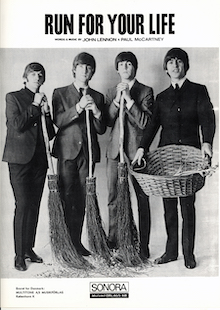 This undoubtedly led to the vocalist as being an “angry young man” and wanting to isolate himself by “hiding me head in the sand,” something John warned his “little girl” to do in order to escape her murder in “Run For Your Life,” incidentally. Similarly, the singer admits to being “cruel” to former lovers as he “beat her and kept her apart from the things that she loved.” “Man, I was mean,” he flippantly recalls, but it’s OK now because, since he has found his new love, he is "changing his scene." Hopefully that’s comforting enough for her! This undoubtedly led to the vocalist as being an “angry young man” and wanting to isolate himself by “hiding me head in the sand,” something John warned his “little girl” to do in order to escape her murder in “Run For Your Life,” incidentally. Similarly, the singer admits to being “cruel” to former lovers as he “beat her and kept her apart from the things that she loved.” “Man, I was mean,” he flippantly recalls, but it’s OK now because, since he has found his new love, he is "changing his scene." Hopefully that’s comforting enough for her!
American Releases
June 2nd, 1967 was the US release date of the album “Sgt. Pepper’s Lonely Hearts Club Band,” which featured “Getting Better” as the fourth song on side one. Following the heady and mysteriously startling “Lucy In The Sky With Diamonds,” the flowing and positive “Getting Better” is a breath of fresh air. The album continued to be reissued in the US on vinyl throughout the years.
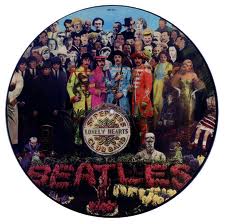 A collectors’ edition of "Sgt Pepper" was released in 1978, this comprising a special pressing of the album as a picture disc, which had become quite popular at that time for popular new releases as well as classic albums. “Sgt. Pepper” definitely fit the bill. Capitol re-released this picture disc yet again on December 15th, 2017 on 180 Gram vinyl using the newly created Giles Martin stereo mix. A collectors’ edition of "Sgt Pepper" was released in 1978, this comprising a special pressing of the album as a picture disc, which had become quite popular at that time for popular new releases as well as classic albums. “Sgt. Pepper” definitely fit the bill. Capitol re-released this picture disc yet again on December 15th, 2017 on 180 Gram vinyl using the newly created Giles Martin stereo mix.
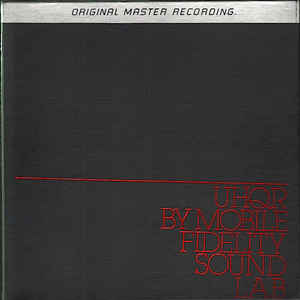 Two interesting American vinyl reissues of the “Sgt. Pepper” album were released as "Original Master Recording" editions produced by Mobile Fidelity Sound Lab. The first edition released in September of 1982 (with matrix # UHQR "Ultra High Quality Recording" 1-100) listed for $40 per copy, which was more than five times the cost of the standard version and was limited to 5000 sequentially numbered copies that weighed 200 grams (double the weight of conventional vinyl at that time) and were packaged between layers of protective foam rubber in a thick box. The second edition from Mobile Fidelity Sound Lab was released in June of 1983 similar to the rest of the Beatles catalog released within their series. Both of these were prepared utilizing half-speed mastering technology from the original master tape on loan from EMI. These versions of “Sgt. Pepper” were only available for a short time and are quite collectible today.. Two interesting American vinyl reissues of the “Sgt. Pepper” album were released as "Original Master Recording" editions produced by Mobile Fidelity Sound Lab. The first edition released in September of 1982 (with matrix # UHQR "Ultra High Quality Recording" 1-100) listed for $40 per copy, which was more than five times the cost of the standard version and was limited to 5000 sequentially numbered copies that weighed 200 grams (double the weight of conventional vinyl at that time) and were packaged between layers of protective foam rubber in a thick box. The second edition from Mobile Fidelity Sound Lab was released in June of 1983 similar to the rest of the Beatles catalog released within their series. Both of these were prepared utilizing half-speed mastering technology from the original master tape on loan from EMI. These versions of “Sgt. Pepper” were only available for a short time and are quite collectible today..
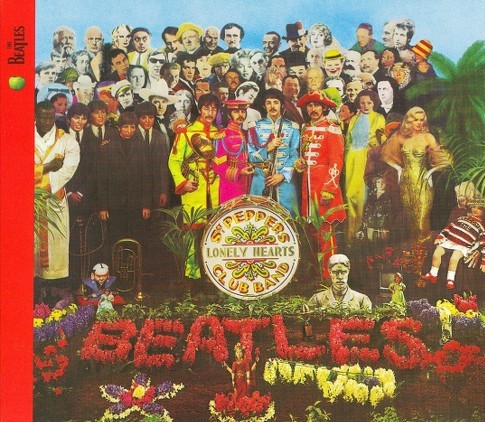 The “Sgt. Pepper” album was released on CD for the first time on September 21st, 1987, the only Beatles CD of the time with an elaborate booklet containing extensive liner notes. The album was then remastered and re-released on September 9th, 2009. The “Sgt. Pepper” album was released on CD for the first time on September 21st, 1987, the only Beatles CD of the time with an elaborate booklet containing extensive liner notes. The album was then remastered and re-released on September 9th, 2009.
 While a scant few copies of the vinyl album had been originally produced in mono back in 1967, the vast majority of fans had never heard “Getting Better,” or any of “Sgt. Pepper,” in its original mono state. With the groundswell of praise the mono mixes were getting in books and interviews, many saying that "mono was the way The Beatles wanted it to be heard," anticipation was very extensive for the September 9th, 2009 released remastered CD box set “The Beatles In Mono,” which contained the entire mono Beatles catalog, the vinyl edition coming out on September 9th, 2014. At long last, enthusiasts can now readily hear (and own) what all the fuss was about. While a scant few copies of the vinyl album had been originally produced in mono back in 1967, the vast majority of fans had never heard “Getting Better,” or any of “Sgt. Pepper,” in its original mono state. With the groundswell of praise the mono mixes were getting in books and interviews, many saying that "mono was the way The Beatles wanted it to be heard," anticipation was very extensive for the September 9th, 2009 released remastered CD box set “The Beatles In Mono,” which contained the entire mono Beatles catalog, the vinyl edition coming out on September 9th, 2014. At long last, enthusiasts can now readily hear (and own) what all the fuss was about.
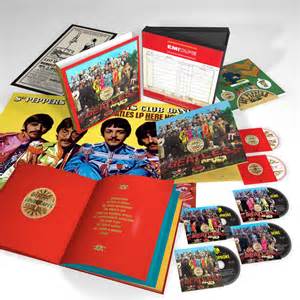 On May 26th, 2017, the new 50th Anniversary release of the "Sgt. Pepper" album was released, which featured a brand new stereo mix of the entire album patterned after the preferred 1967 mono mix, this being created by Giles Martin and engineer Sam Okell. The original "take one" of the rhythm track was also featured as a bonus track on the "2 CD Anniversary Edition" as well as the "Super Deluxe Edition" box set, not to mention "take 12" also being included on the above mentioned box set as well. On May 26th, 2017, the new 50th Anniversary release of the "Sgt. Pepper" album was released, which featured a brand new stereo mix of the entire album patterned after the preferred 1967 mono mix, this being created by Giles Martin and engineer Sam Okell. The original "take one" of the rhythm track was also featured as a bonus track on the "2 CD Anniversary Edition" as well as the "Super Deluxe Edition" box set, not to mention "take 12" also being included on the above mentioned box set as well.
Only one American live Paul McCartney album contained the song, this being “Back In The US.” It was released on November 11th, 2002.
Live Performances
Since the touring days of The Beatles were over the previous year, the group never performed “Getting Better” live in any form. However, Paul did include the song during a few of his concert tours.
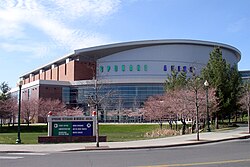 Paul's first inclusion of “Getting Better” was during his “Driving USA” tour, which ran from April 1st through May 18th, 2002. His “Back In The US” tour included this song as well, this tour beginning on September 21st and stretching to October 29th of 2002. His “Driving Mexico” tour, this comprising only three dates between November 2nd and 5th of 2002, included the song as well. Then on to the orient with Paul's “Driving Japan” tour, which ran from November 11th to 18th, 2002, “Getting Better” still being included in the set list. His “Back In The World” tour continued his use of the song, this tour running from March 25th (Paris) to June 1st (Liverpool), 2003. After retiring the song from live performances for many years, he brought it back for his "Got Back" tour, which ran from April 28th, 2022 (at the Spokane Arena in Spokane, WA) to December 19th, 2024 (London, England). Paul's first inclusion of “Getting Better” was during his “Driving USA” tour, which ran from April 1st through May 18th, 2002. His “Back In The US” tour included this song as well, this tour beginning on September 21st and stretching to October 29th of 2002. His “Driving Mexico” tour, this comprising only three dates between November 2nd and 5th of 2002, included the song as well. Then on to the orient with Paul's “Driving Japan” tour, which ran from November 11th to 18th, 2002, “Getting Better” still being included in the set list. His “Back In The World” tour continued his use of the song, this tour running from March 25th (Paris) to June 1st (Liverpool), 2003. After retiring the song from live performances for many years, he brought it back for his "Got Back" tour, which ran from April 28th, 2022 (at the Spokane Arena in Spokane, WA) to December 19th, 2024 (London, England).
Conclusion
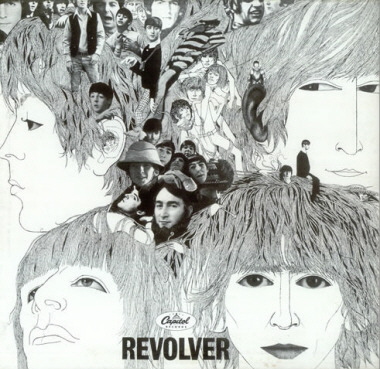 Despite its touches of negativity in the verses, where Paul recollects the specifics of a not-so-pleasant past, positivity rules in “Getting Better,” something genuinely needed to lift the spirits of the listener within the framework of the “Sgt. Pepper” album. Subtly positioned between the very hallucinogenic “Lucy” and the heady “Fixing A Hole,” the infectious optimism of "Getting Better" takes us where both “Good Day Sunshine” and “Got To Get You Into My Life” of the previous album point us toward. Where both of these “Revolver” tracks amount to Paul solo efforts with some minimal input from the others, “Getting Better” comes off as a true group effort from beginning to end. Despite its touches of negativity in the verses, where Paul recollects the specifics of a not-so-pleasant past, positivity rules in “Getting Better,” something genuinely needed to lift the spirits of the listener within the framework of the “Sgt. Pepper” album. Subtly positioned between the very hallucinogenic “Lucy” and the heady “Fixing A Hole,” the infectious optimism of "Getting Better" takes us where both “Good Day Sunshine” and “Got To Get You Into My Life” of the previous album point us toward. Where both of these “Revolver” tracks amount to Paul solo efforts with some minimal input from the others, “Getting Better” comes off as a true group effort from beginning to end.
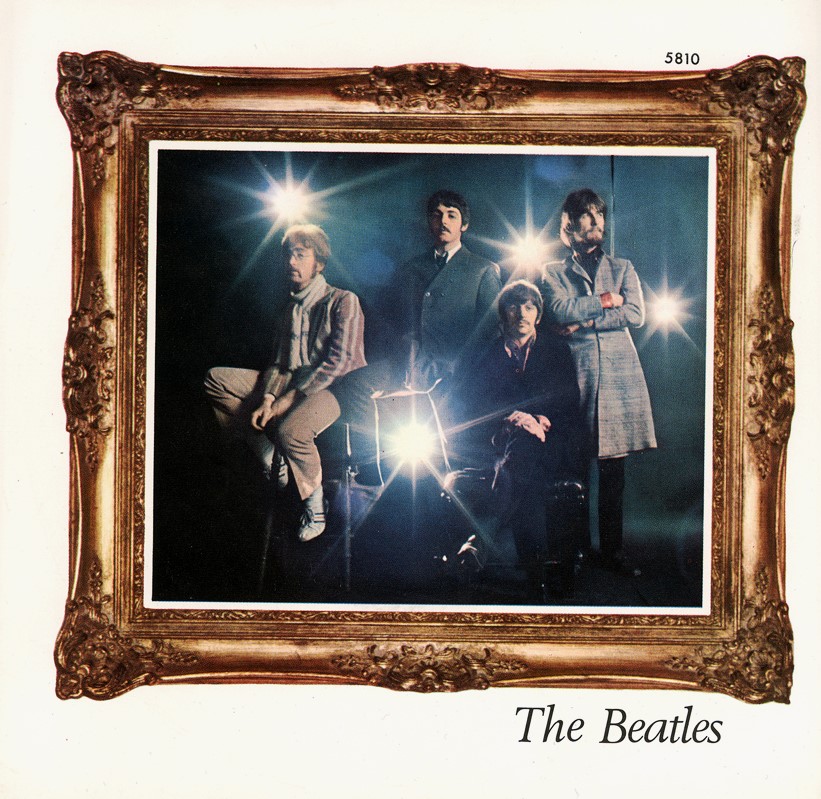 In the context of an album listening experience, “Getting Better” does much in steering us away from the supposed "concept album" effect that you grasp from the opening two songs. However, the "feel good" nature of this song, as well as the intricate arrangement and communal effort, make it more than alright that this is just another Beatles album after all. In the context of an album listening experience, “Getting Better” does much in steering us away from the supposed "concept album" effect that you grasp from the opening two songs. However, the "feel good" nature of this song, as well as the intricate arrangement and communal effort, make it more than alright that this is just another Beatles album after all.
Song Summary
“Getting Better”
Written by: John Lennon / Paul McCartney
-
Song Written: March 8, 1967
-
Song Recorded: March 9, 10, 21 and 23, 1967
-
First US Release Date: June 2, 1967
-
-
US Single Release: n/a
-
Highest Chart Position: n/a
-
-
Length: 2:47
-
Key: C major
-
Producer: George Martin, Peter Vince
-
Engineers: Malcolm Addey, Ken Townsned, Graham Kirkby, Geoff Emerick, Richard Lush, Peter Vince, Ken Scott
Instrumentation (most likely):
-
Paul McCartney - Lead and Harmony Vocals, Electric Piano (Hohner Pianet C), Bass Guitar (1964 Rickenbacker 4001S), Guitar ? (1962 Epiphone Casino ES-230TD?), handclaps
-
John Lennon - Bass Guitar (1965 Burns Nu-Sonic), Rhythm Guitar (1965 Epiphone Casino ES-230TD), Backing Vocals, handclaps
-
George Harrison – Lead Guitar (1961 Sonic Blue Fender Stratocaster), Tamboura, Backing Vocals, handclaps
-
Ringo Starr – Drums (1964 Ludwig Super Classic Black Oyster Pearl), Conga drums, handclaps
-
George Martin - Piano (Hamburg Steinway Baby Grand), Miniature Harpsichord (Virginal)
Written and compiled by Dave Rybaczewski
|
IF YOU WOULD LIKE TO MAKE A DONATION TO KEEP THIS WEBSITE UP AND RUNNING, PLEASE CLICK BELOW!
Sign Up Below for our MONTHLY BEATLES TRIVIA QUIZ!
|